Francesca and Henk-Jan's Backpacking Trip!
Sunday, August 1, 2010
Raising Lanterns In Pingyao
We woke up late the morning of the 30th … we were approaching the end of July and finally had Tibet scheduled and ready for the 9th through the 25th of August! This left us with 10 days to see Pingyao and the next few cities we wanted to explore before flying from Chengdu to Lhasa on the 9th of August. Knowing this we used our first day in Pingyao to sleep in, relax in the guesthouse for a while, and then explore the city itself once the strongest heat of the day had passed. After waking up for a slow start Henk and I had a much-needed shower and then got some breakfast at Harmony Guesthouse. The food wasn’t anything great but we were hungry! While eating, two Dutch guys, Roy and Manuel, came into the Guesthouse and started asking about some tours that we were also interested in going on. We concluded that the 4 of us would save money by sharing cars to a few of the sites and eventually booked everything for the following two days: a day trip to Lijiashan Cave Dwellings, a day trip to the Wang Family Courtyard and Zhangbi Underground Castle, and finally a 2 hour transfer to the nearby city of Taiyuan to take our respective flight (for us) and bus (for them) out of the area. Henk talked to the guys for a few hours about their and our travels while I got a lot of work done sorting out some of our trip photos. Late in the afternoon we set out to explore the city of Pingyao!
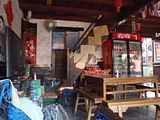
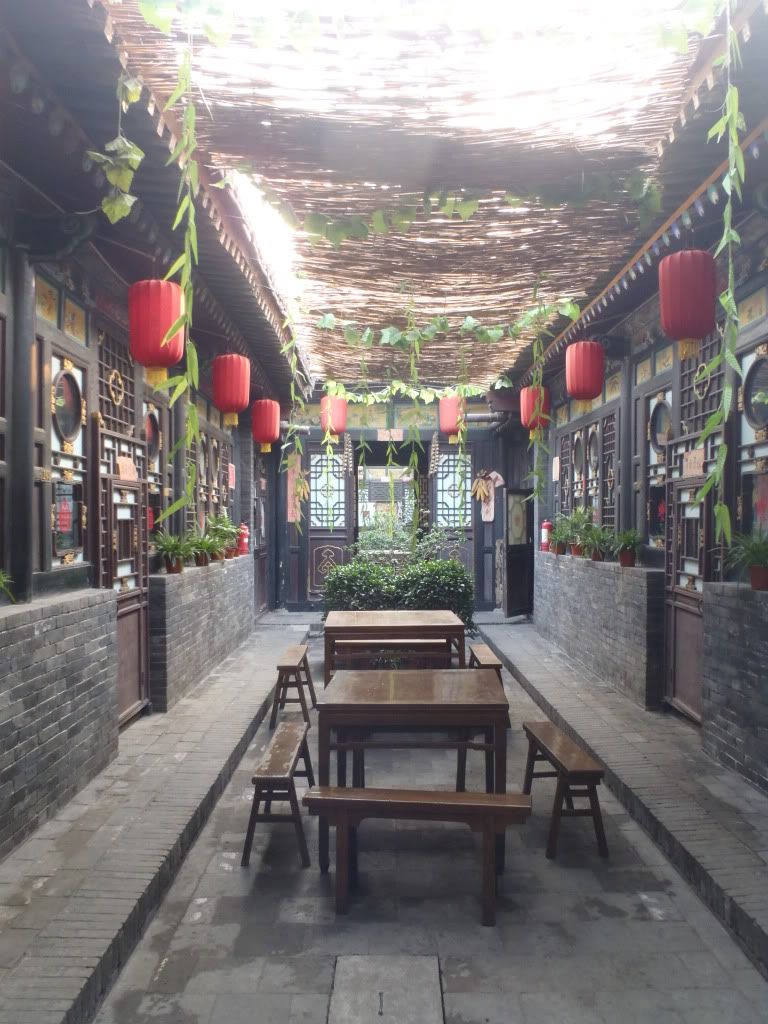
A bit about the city of Pingyao from our friend Wiki: “Pingyao was a financial center of China. It is now renowned for its well-preserved ancient city wall, and is a UNESCO World Heritage Site… Pingyao still retains its city layout from the Ming and Qing dynasties, conforming to a typical bagua pattern. The city walls of Pingyao were constructed in the 3rd year of the Hongwu Emperor (1370). The walls have six barbican gates. The north and south sides have one gate each. The east and west sides have two gates each. This pattern is similar to that of a turtle (the head, tail, and four legs), earning Pingyao the moniker "Turtle City." More than 300 sites in or near the city have ancient ruins. [The] preserved Ming- and Qing-style residences number close to 4,000. The streets and storefronts still largely retain their historical appearance.”

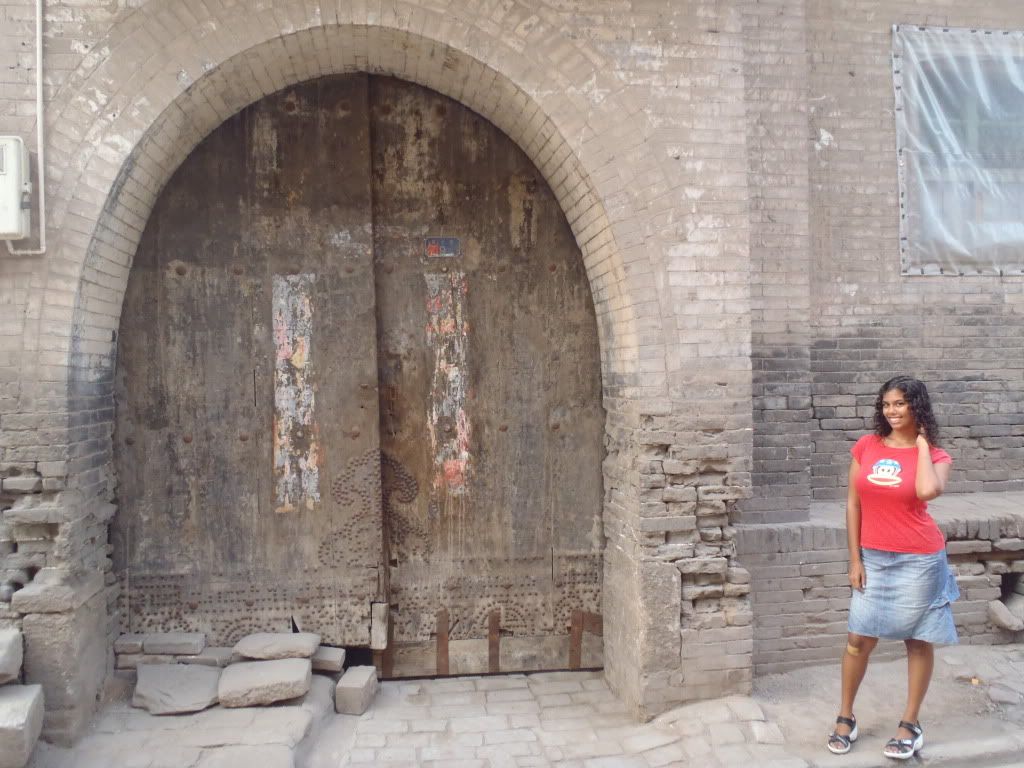
There was even a moat just outside the city walls! We walked through the active main street of the city which was littered with stores and snack-vendors and entrances to old courtyards where the residences had largely been turned into hotel rooms for tourists, (but locals did still live there as well!) then explored the numerous gates around the walls, all extremely well preserved/restored. We even walked around outside the city walls for a bit to see a more modern Pingyao… which wasn’t that interesting so we quickly went back inside the enclosed city! It was close to dinnertime now and we had received a recommendation for some great pizza from the Dutch guys – go to Sakura they said. We did and discovered from the restaurant’s front menu page that they were apparently also located in Chiang Mai, Thailand and Vang Vieng, Laos! Perhaps we ate there before and had no idea! Henk and I shared some average macaroni and cheese and some delicious Hawaiian pizza before returning to our hotel for rest.
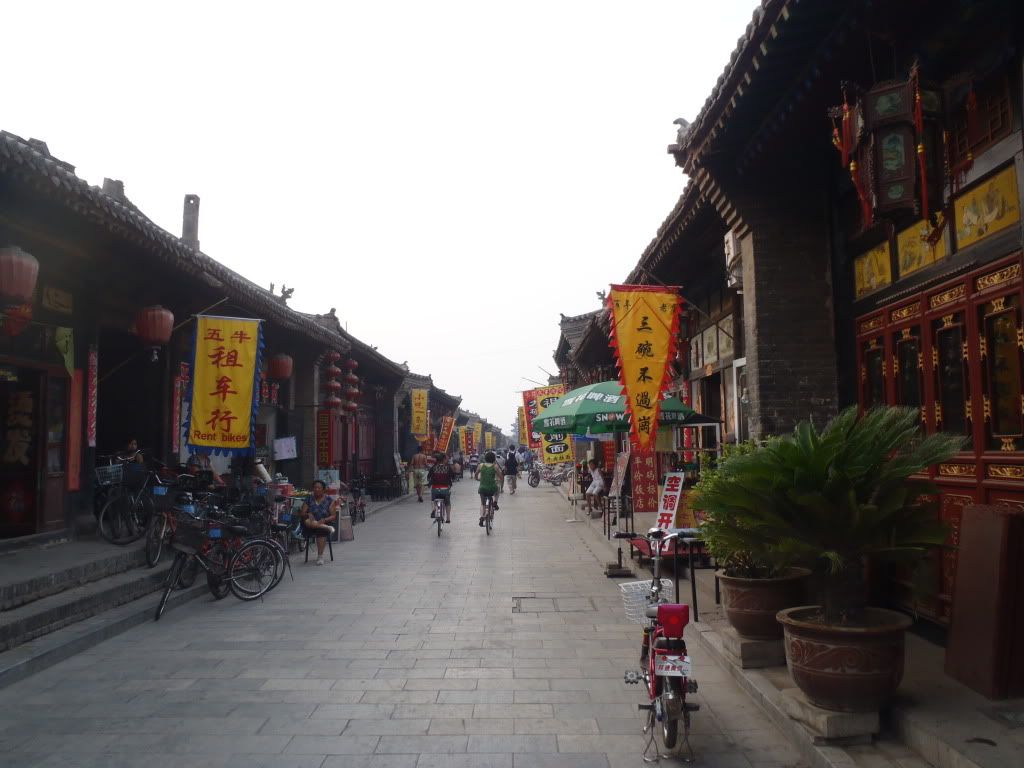
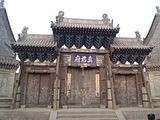
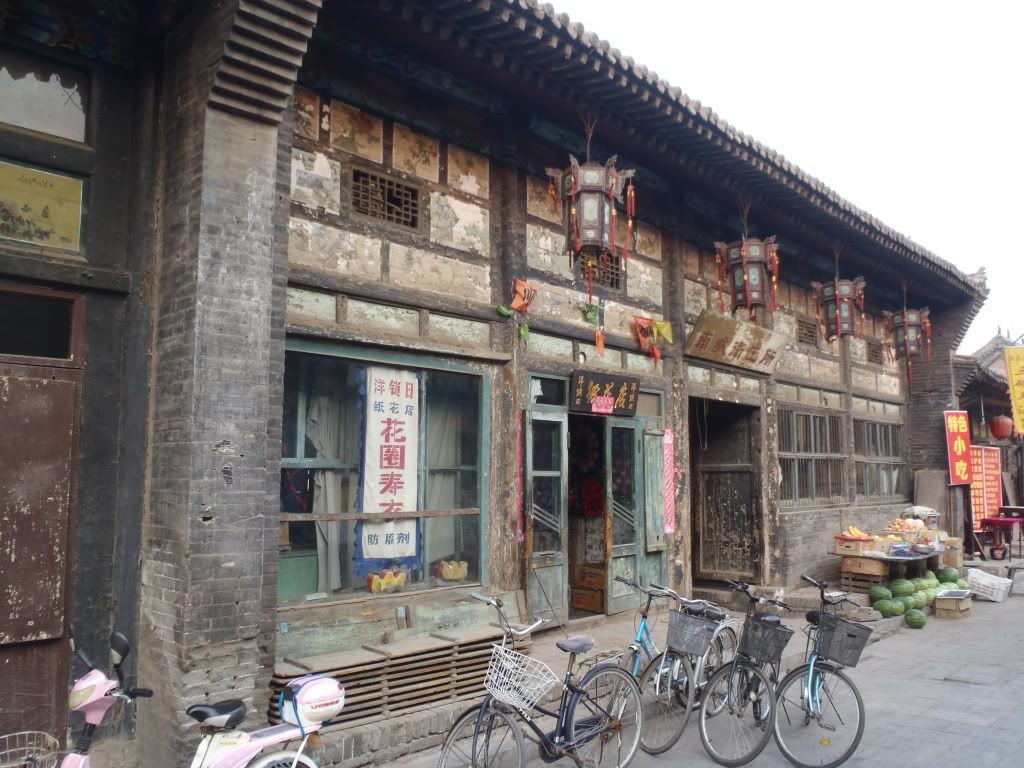
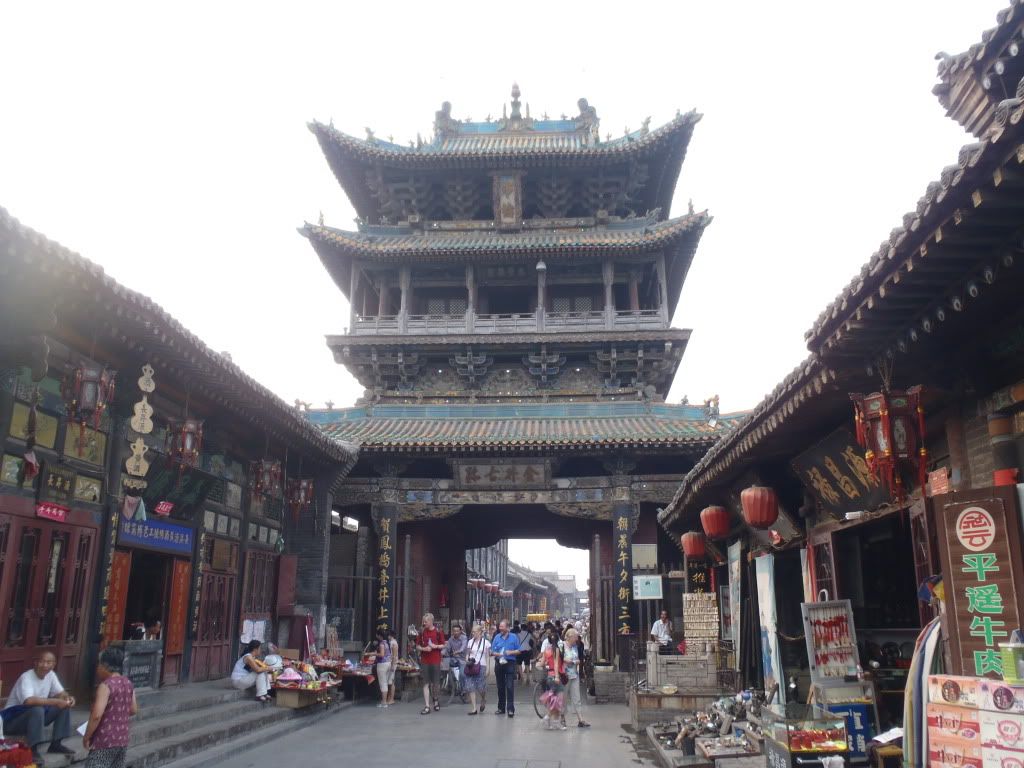
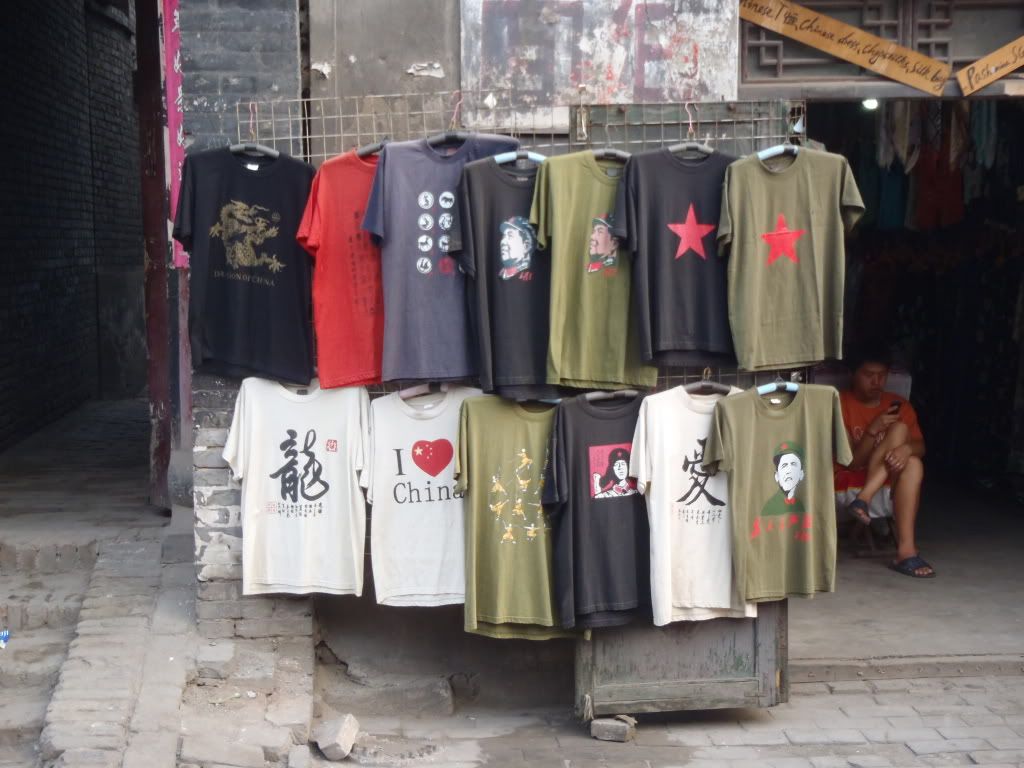
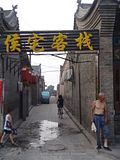
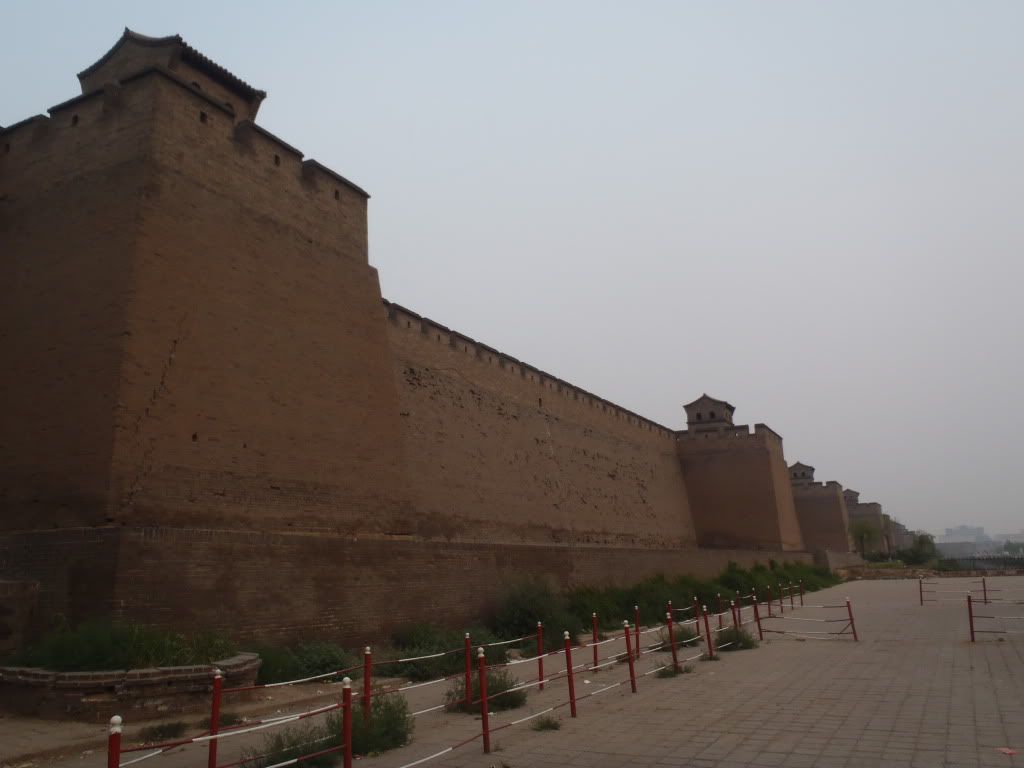
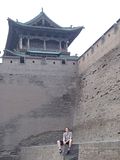
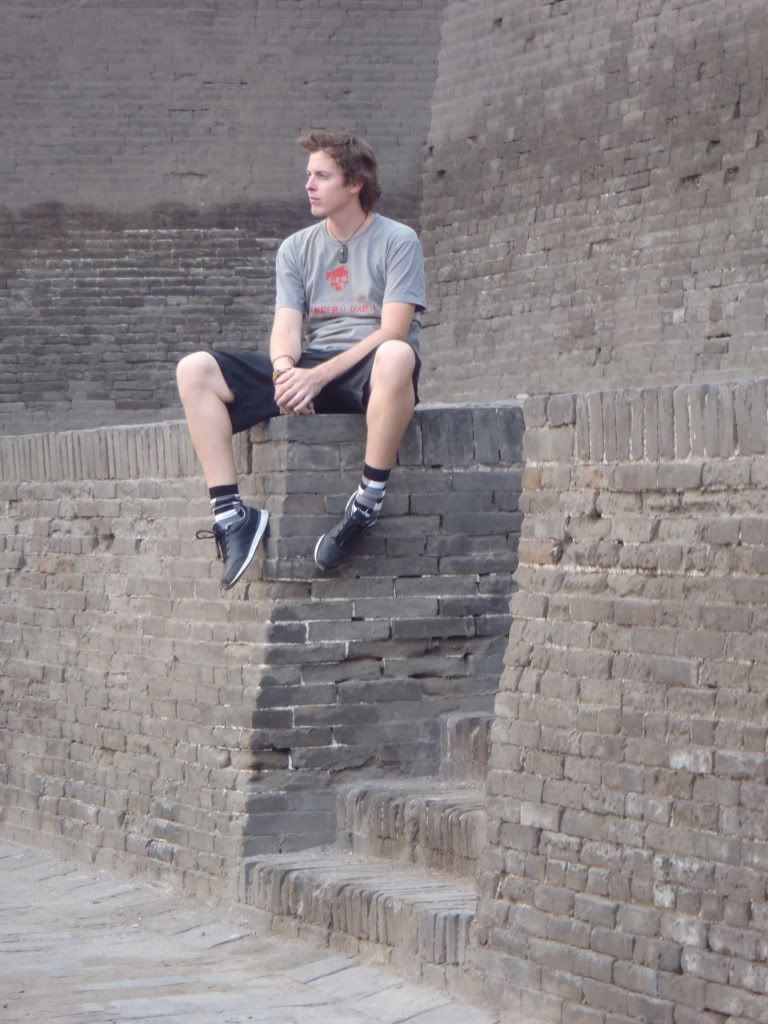
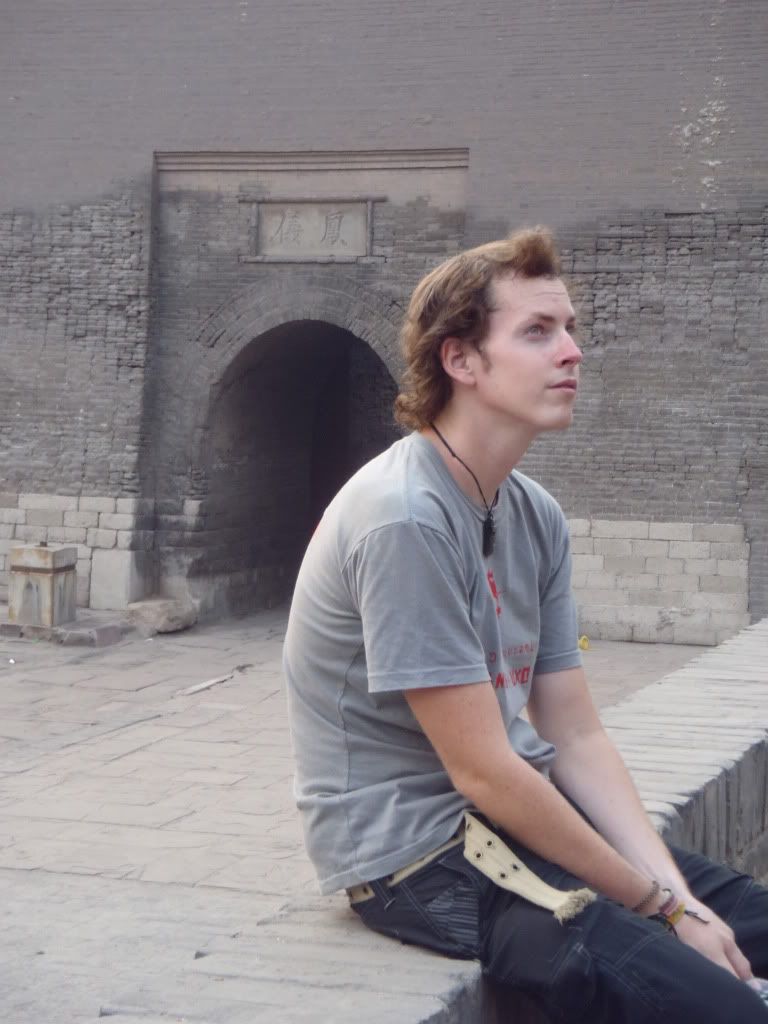
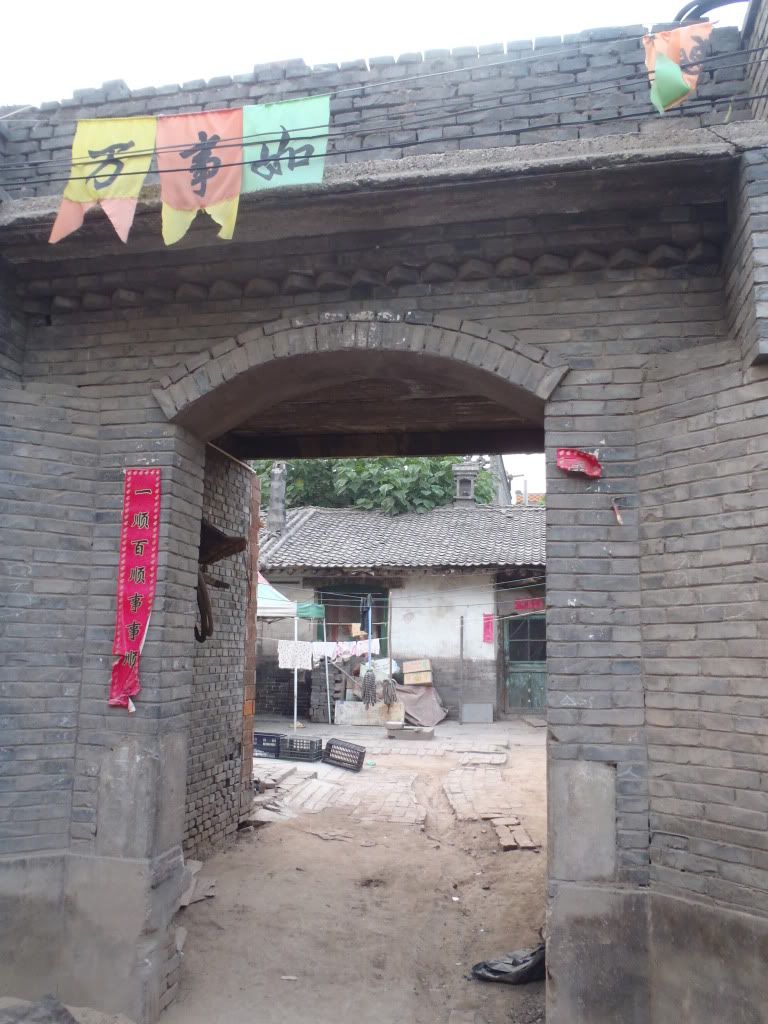
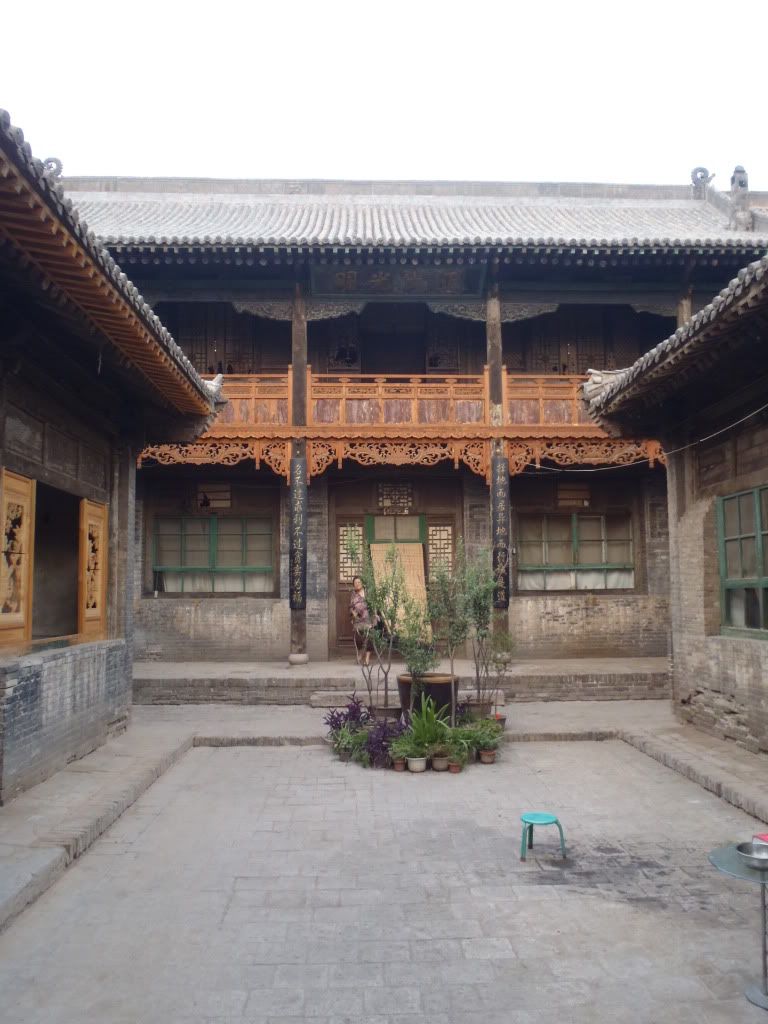
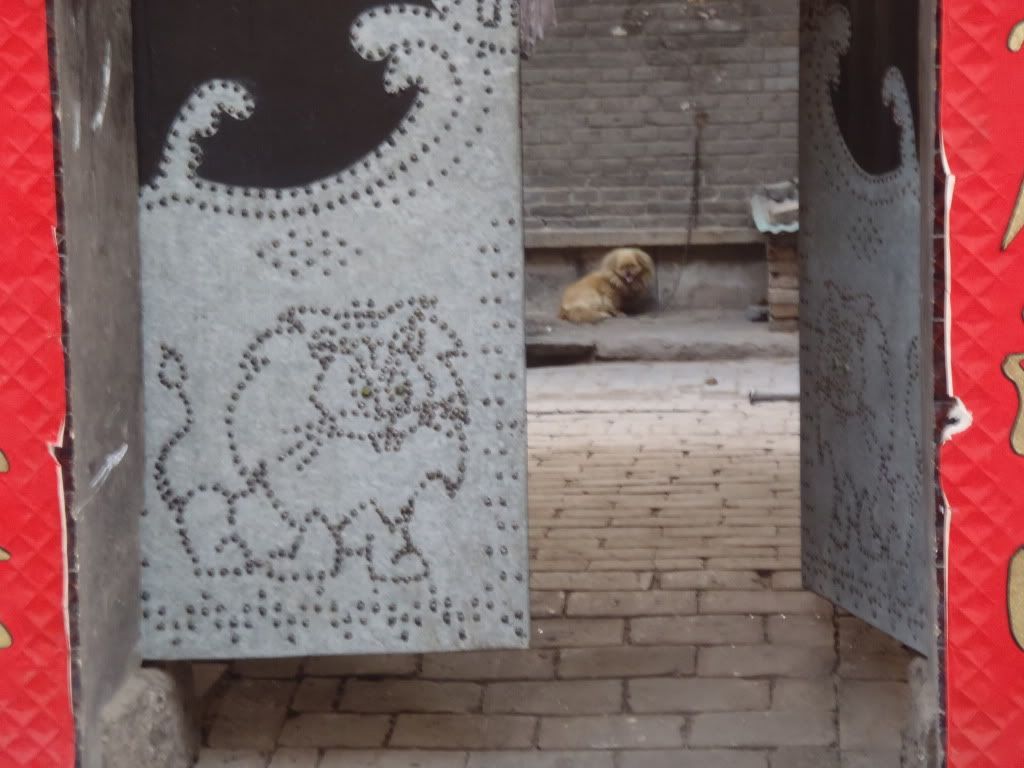
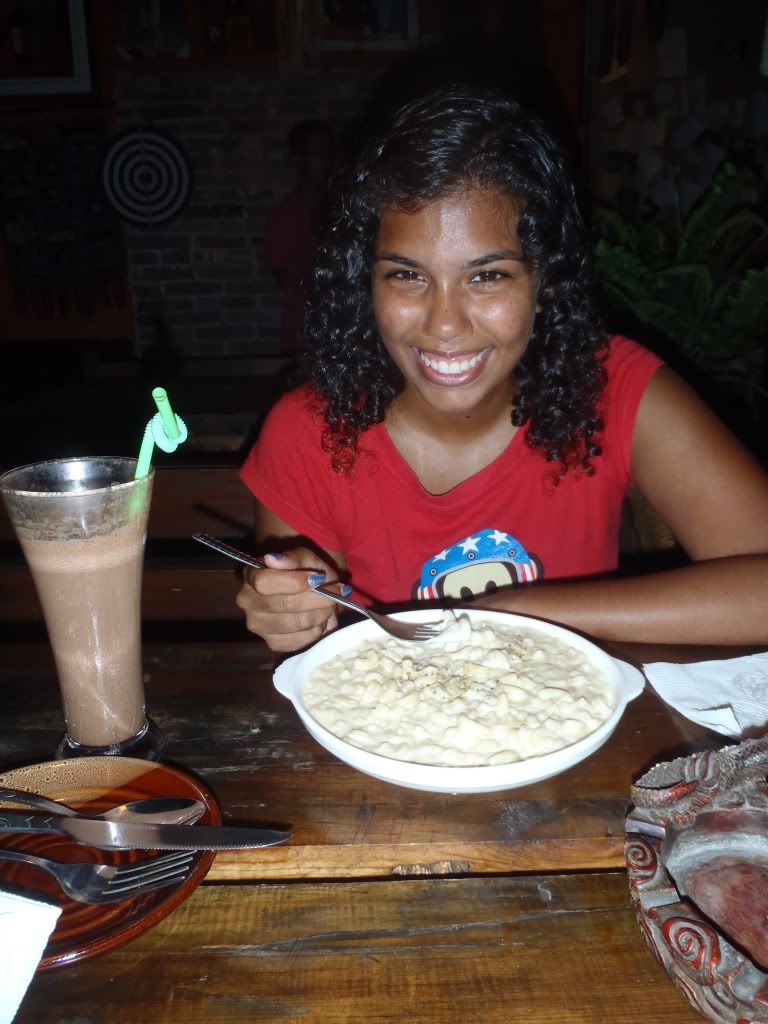
Early the next morning we headed to the lobby of Harmony Guesthouse to order some take-away sandwiches for the long road trip we had ahead of us. It was extremely hot out already, so we knew we’d be in for a rough ride. Thank God the majority of the time we’d be in the A/C comfort of the car! The drive to Lijiashan was decently scenic but over 3 hours. We passed the time by discussing with Roy and Manuel where they have traveled in the world and their opinions on China. They even introduced us to a book that sounded really good – The Wild Geese – about 3 generations of Chinese women trying to survive in their respective societies. We started seeing signs that our destination was coming closer and after a bit of asking around, our driver managed to find it and navigate up a bunch of narrow, rough streets to pull into a little parking area.
The place looked completely deserted. The Lonely Planet had told us that this village constructed of cave-dwellings was an “absolute dream for travelers wanting to get firsthand experience of Shanxi’s cave houses” and that it “used to be home to more than 600 families… but today’s population numbers just over 40.” Well LP – that population must now be dwindling to nothing! We must have seen a total of 6-8 people while we were there at the most. Lijiashan is a (LP help taken here since there is hardly any information elsewhere) “remote 550-year-old village hugging a hillside set back from the Yellow River, [which] has hundreds of cave dwellings scaling nine stories.” Now once we walked up the dirt path and looked around, first of all we had a hard time figuring out exactly what we were looking for! We eventually realized that the “caves” LP describes aren’t actually caves, but rather homes built along/into the cliff on the mountainside. Looked cool in the pictures but the reality wasn’t nearly as special as they make it out to be. There were also supposed to be some hotels around but we saw no signs of life at all.
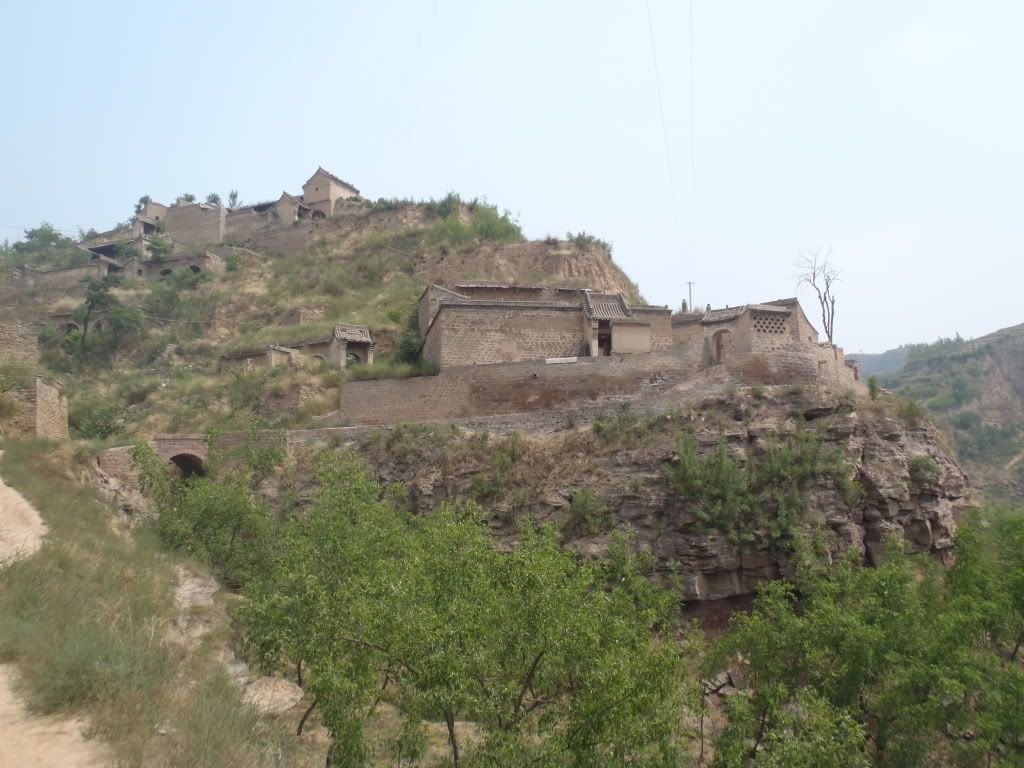
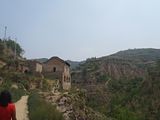
We did have the luck to meet one family (the only family we saw!) who still lived in their so-called ‘cave-dwelling’ house. They didn’t speak any English but were really friendly and hospitable and invited us inside to see their home. It didn’t look like it was a home built into a cave but it was very small and surprisingly cool inside compared to the horrible heat outside. They had one large bed in the corner of the room which was a traditional “bamboo mats” mattress and when I sat on it was just as rock-hard as I predicted it would be. We weren’t able to take any pictures of their place though, so you’ll have to settle for images of the even more deserted looking dusty courtyards, storage rooms, and small dwellings we found as we continued our walk around the town. Everything started to look the same pretty quickly despite us climbing up and down a bunch of different paths and exploring every different direction. The heat was absolutely killing us (I almost passed out and had to sit down, and everyone else was sweating with their eyes starting to glaze over!) so we gave up on finding more than we were seeing and headed back to the car.
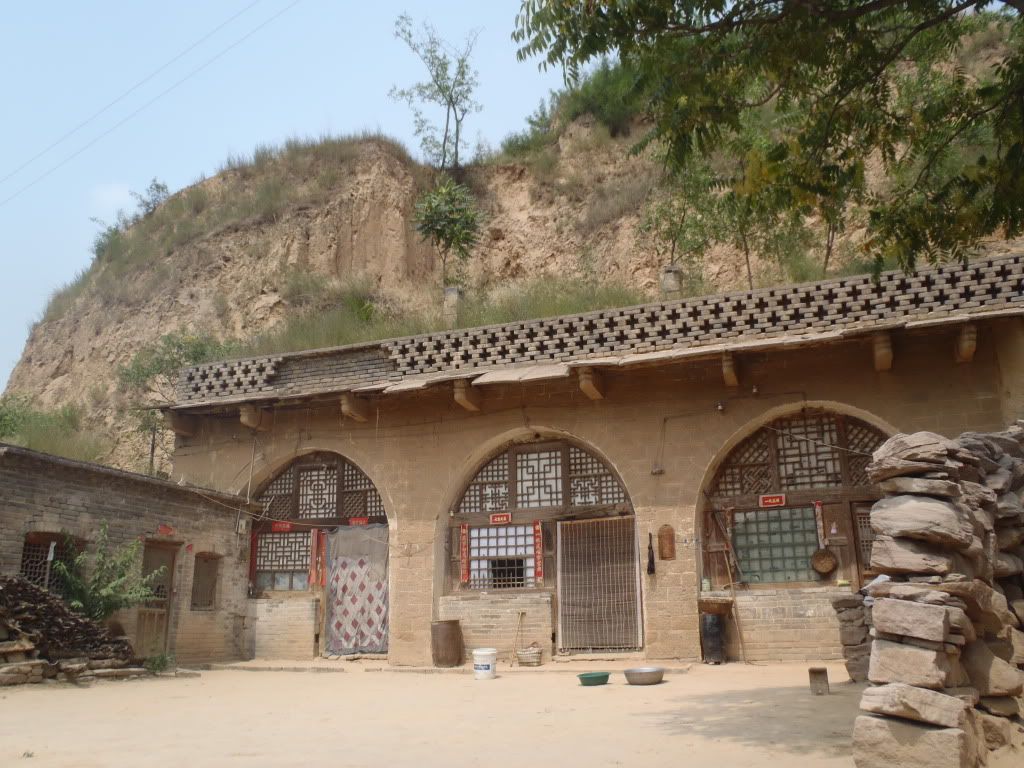
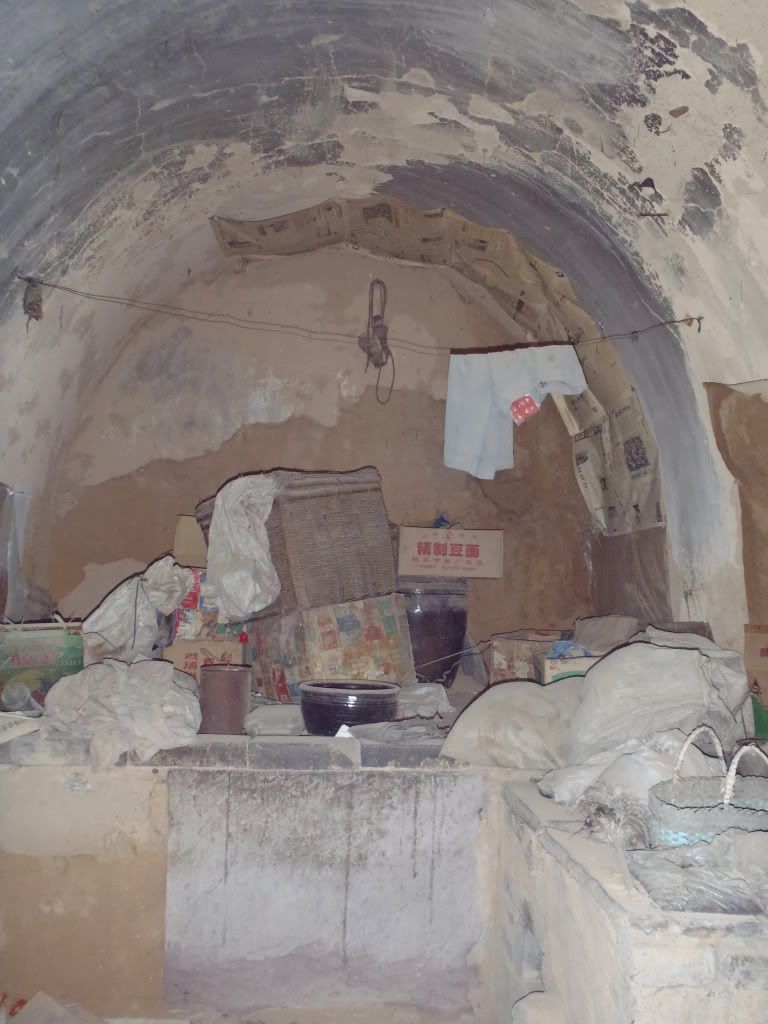
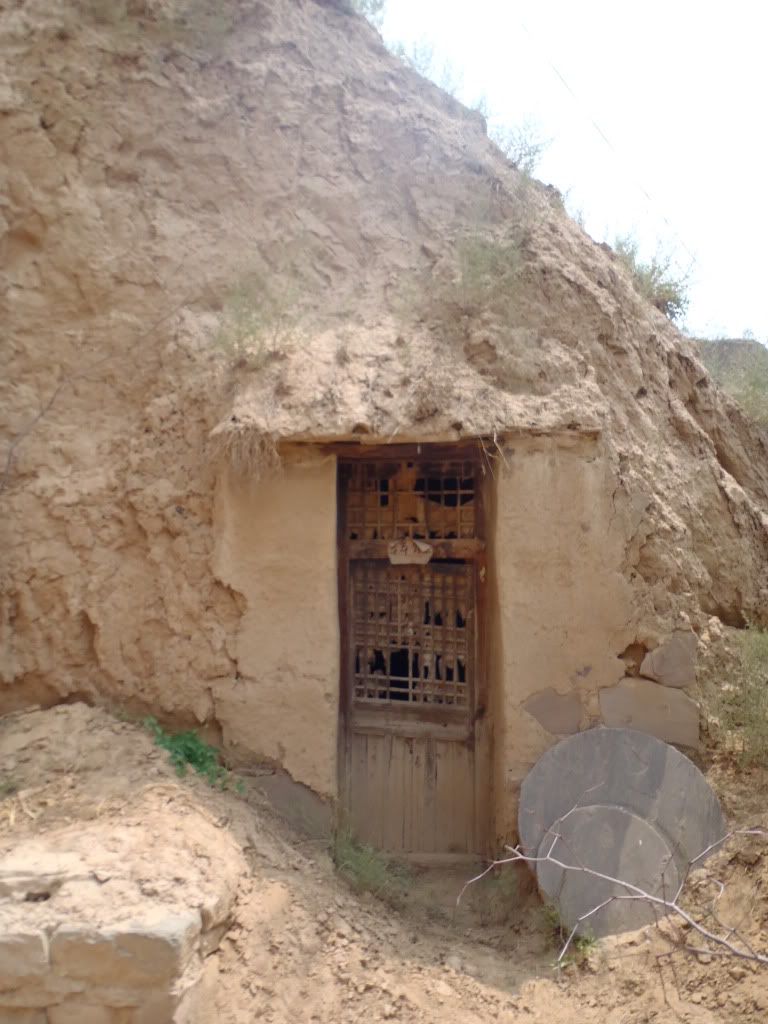
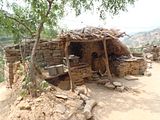
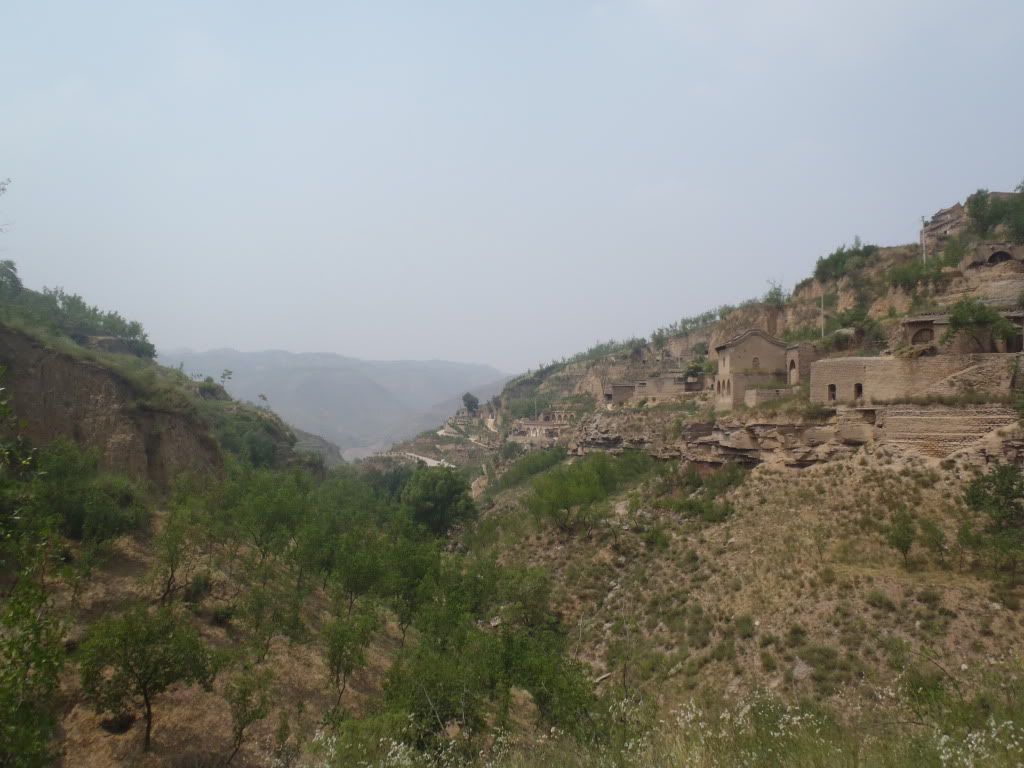

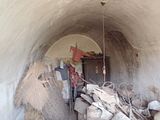
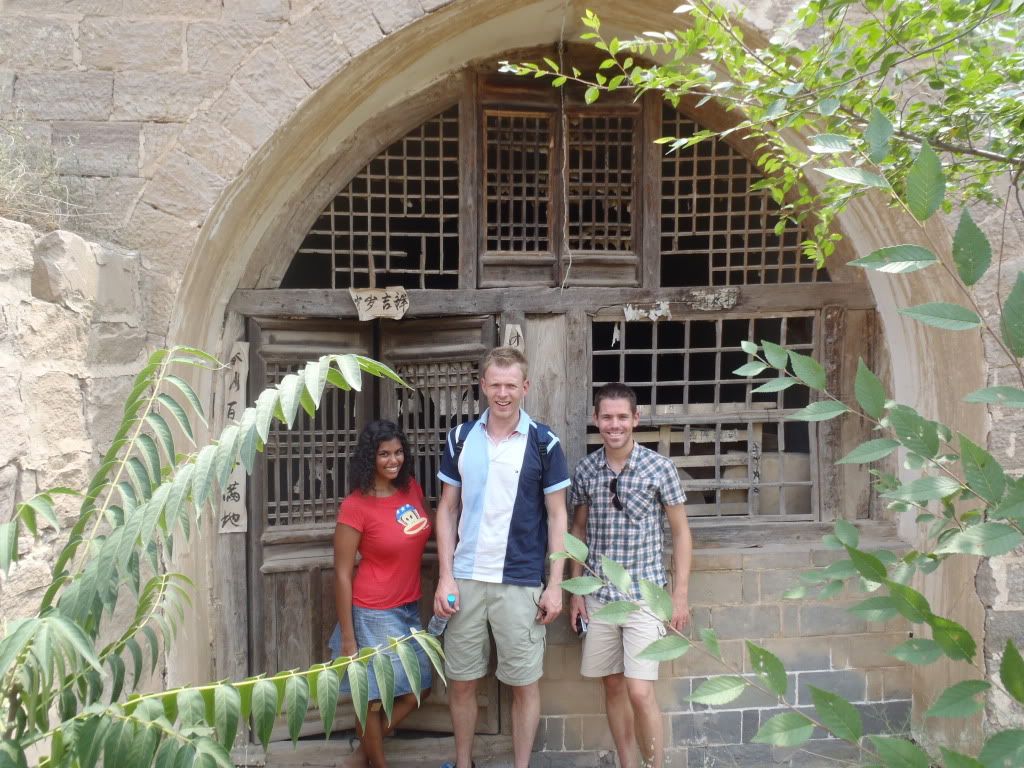

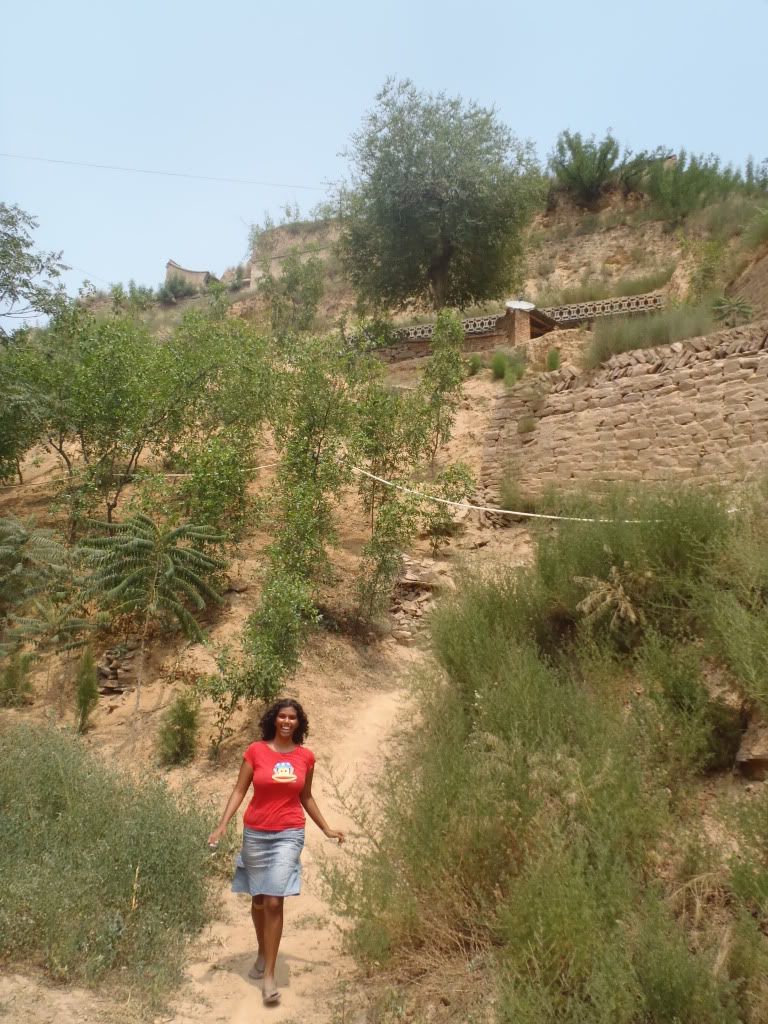
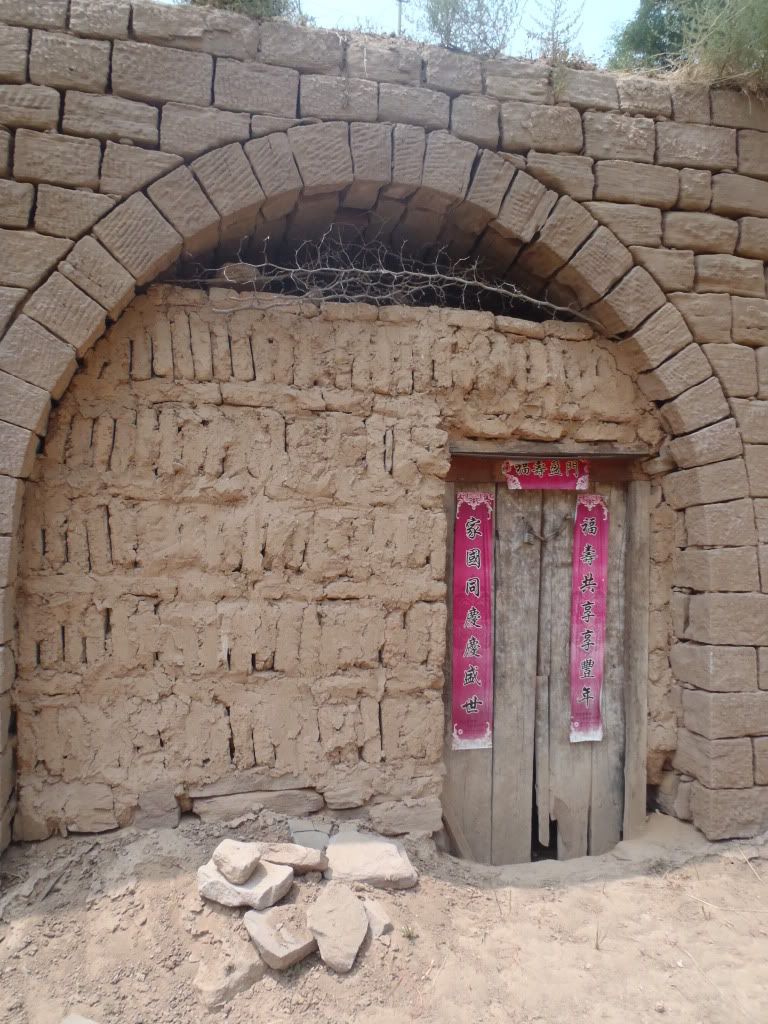

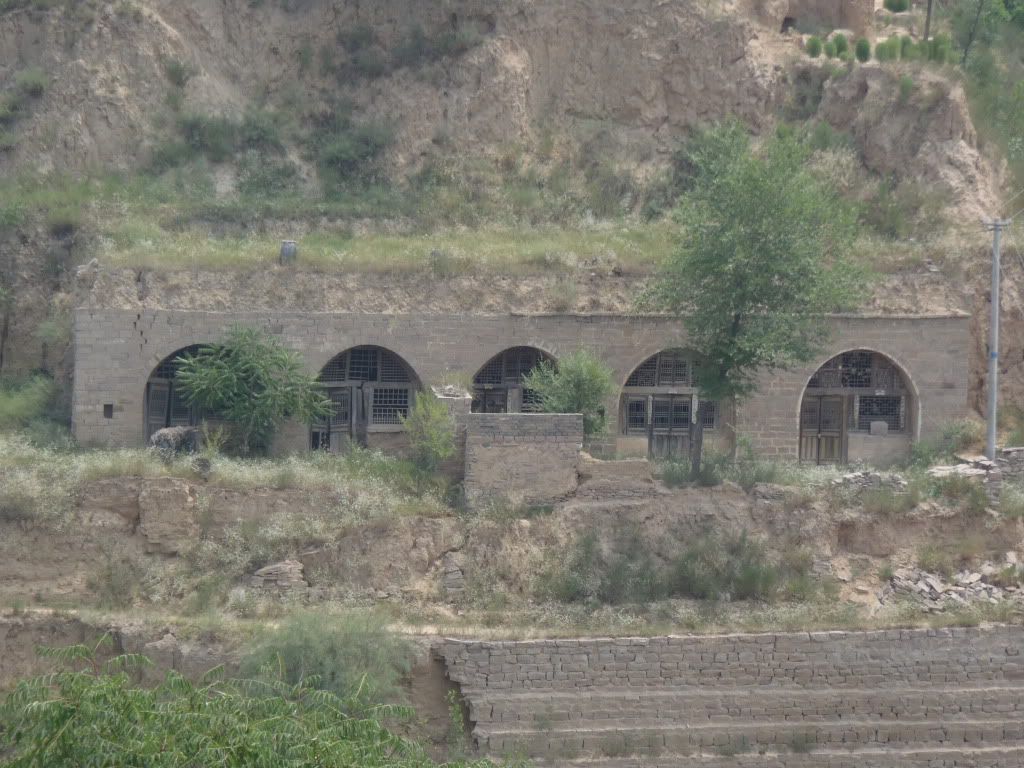
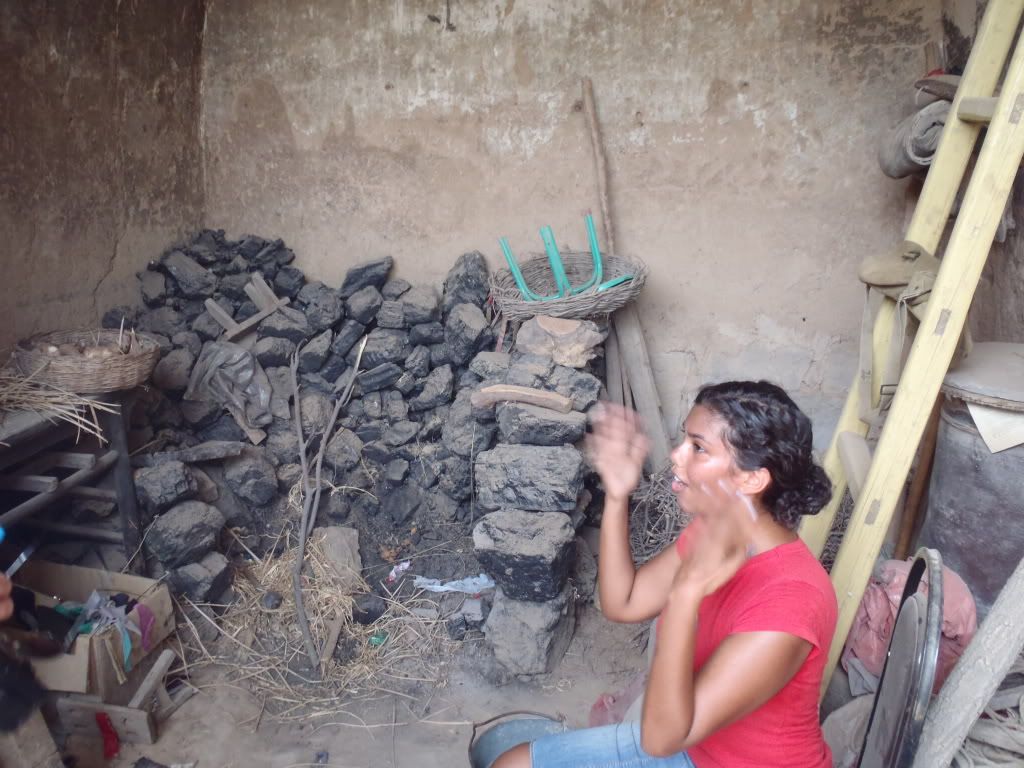
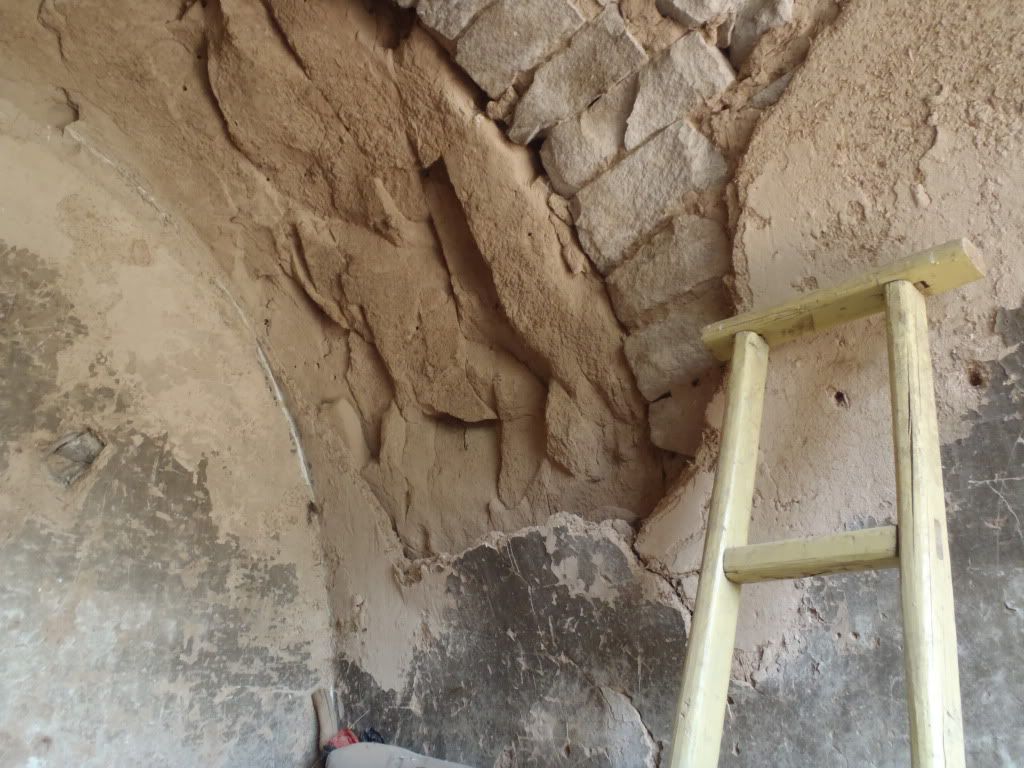
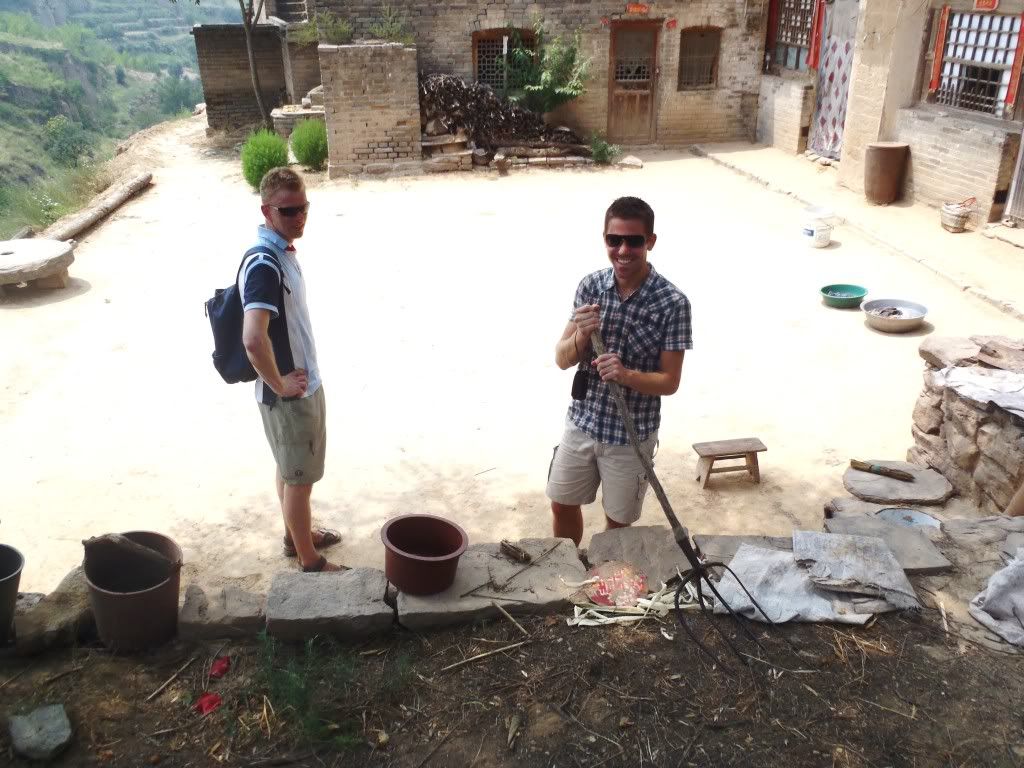
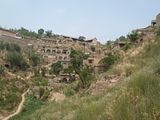
Our driver took us to the small village of Qikou which was right on the Yellow River. The LP tells us that it used to be a trading port – but the place looks long forgotten now. I also learned the following information from ChinaToday.com: “During the Kangxi and Qianlong reigns of the Qing Dynasty (1644-1911), Qikou was the commercial center and commodity transfer harbor, where dozens, sometimes hundreds of boats, berthed every day. Cereals, oils, salt, furs, medicines and many other products came to Qikou on water routes from northwest China, before being transported to other parts of the country by horse and camel.” It seems like the town fell apart after it became severely damaged during the Japanese occupation. Henk, Roy, Manuel, and I dragged ourselves out of the car and back into the heat with the promise of cold drinks and a seat in the shade. We tried to rest for a bit before we explored the area. While resting we observed the locals being fed their “pulled” noodle lunch by a chef who was pretty amusing to watch. However the extremely dirty location and products he was using (dark plumes of exhaust smoke were making their way out of passing trucks and giving all of the road-side food a good dusting) persuaded us not to try anything.
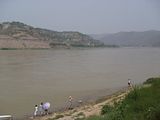
After a quick (and not too interesting) walk around the city trying to find the Black Dragon Temple (which we later realized our driver was planning on driving us to, but by that point we were too exhausted to go explore it) we piled back in the car and made clear to our driver that we wanted to return to Pingyao. A few hours later and we were back! The four of us decided to have dinner at Sakura again… BBQ chicken pizza, tuna salad, and fruit salad for Henk and I!
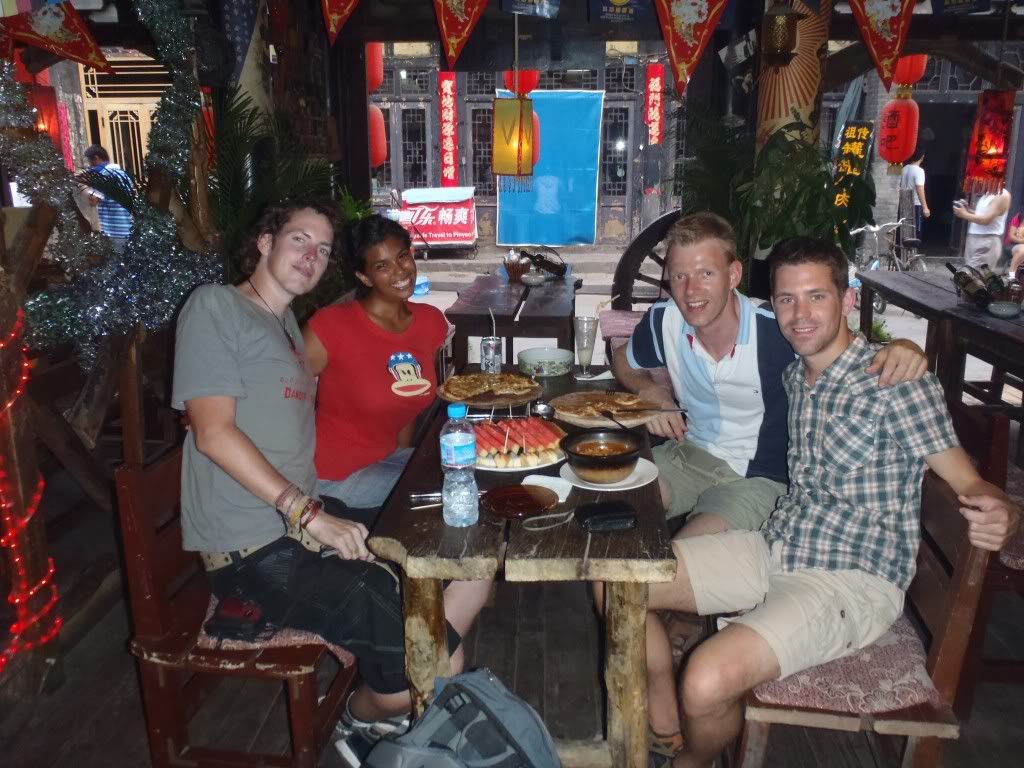
The next morning we met again in the Harmony Guesthouse lobby and headed back to the same car as yesterday (complete with the same Chinese driver as well!) for another journey outside of the city. This time we went to Wang’s Family Courtyard and the Zhangbi Old Castle. First, the Wang Family Courtyard. This complex was quite large – huge, in fact, compared to a lot of the other Chinese homes we had seen. We later watched the movie ‘Raise the Red Lantern’ which gave us a good idea how the different areas of the home were used. The ‘Master’ of the house would have multiple wives who would each have their own little house area – living, bedroom, etc. In this case the Master was of the family name ‘Wang’ which was also the shape (like the Chinese character ‘Wang’) that the complex was built in. This home was built during the Qing Dynasty and had more than 1000 various rooms covering more than 250,000 square meters! Insane! It looked like a really good place to play hide-and-seek, because not only was the complex gigantic but it all looked strikingly similar… both the hider and the seeker could get lost just trying to remember their way!
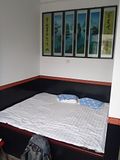
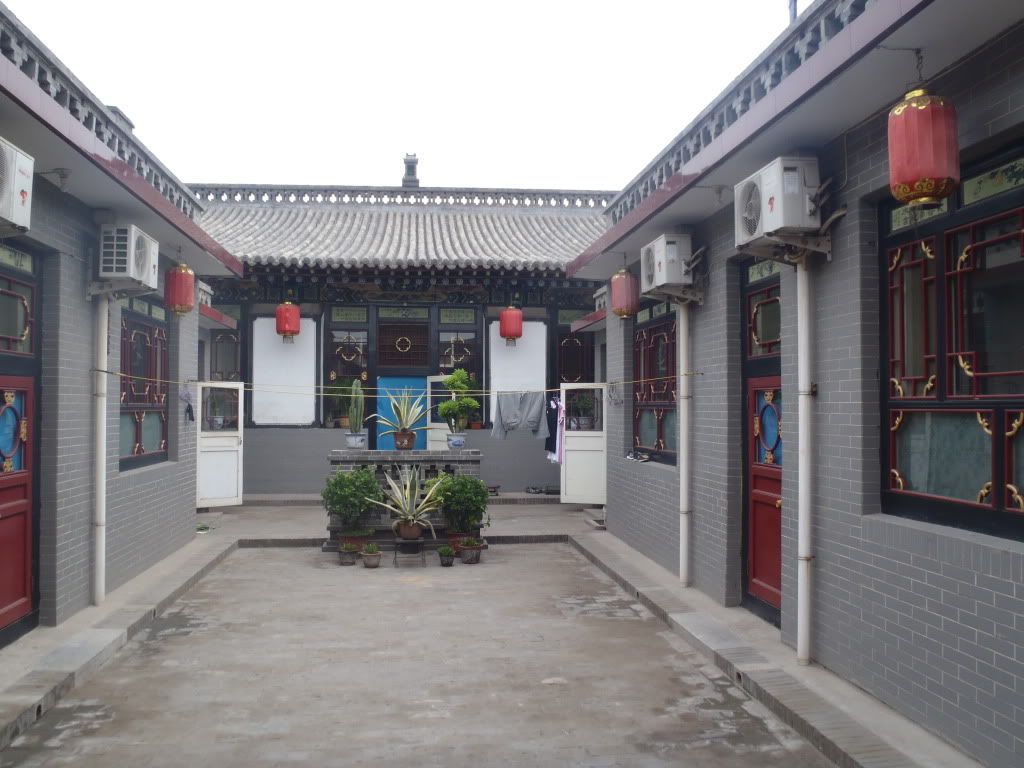
The four of us stumbled around the compound finding a nearly identical layout everywhere we went. The home was divided into both an east and a west section named Gaojiaya and Hongmenbao respectively. The first building group we came across was constructed in the 1700 and 1800’s by two 17th generation Wang brothers – Wang Rucong and Wang Rucheng. The area was just under 20,000 square meters and had well over 300 houses. There were rooms for servants, decorative parlors, and many, many bedrooms. Many of the buildings in the various courtyards were intricately carved and had many rooms to explore. There was even a school inside... the Guixin Academy of Classical Learning! However this got old pretty quickly since they all looked so similar! Couldn’t they have added a little color or differing décor to vary it up?
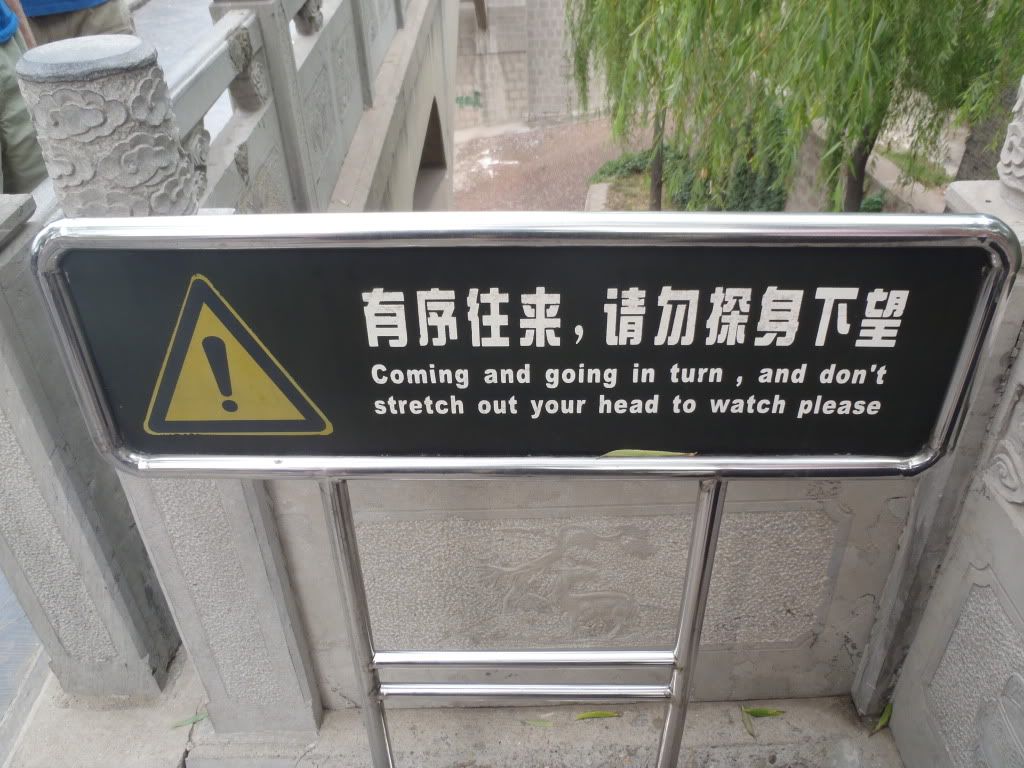
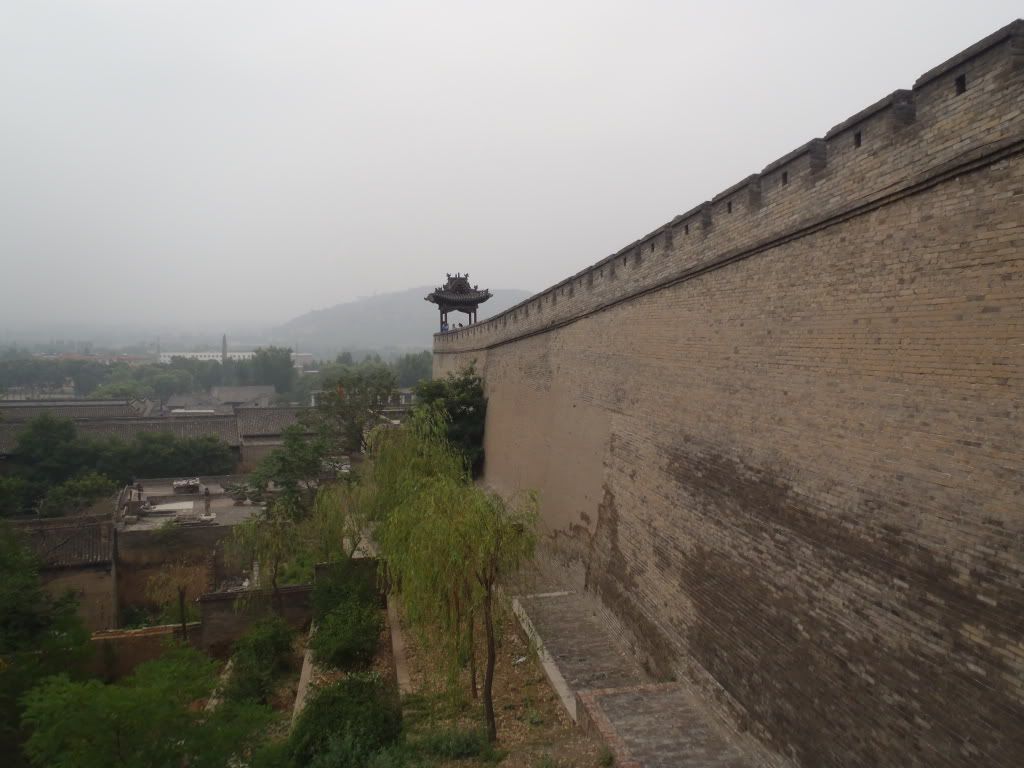
The next area of the complex titled the ‘Red Gate Castle’ was built a bit earlier than the former, solely in the 1700’s, and was much larger consisting of over 700 rooms. The style of these courtyards and buildings were much rougher and less sophisticated – more indicative of a Ming Dynasty style rather than Qing Dynasty. One of the more interesting areas was called the ‘Moral Character’ room which contained a large stone carving on the wall displaying “Four Comforts.” Towards the back of the complex was Wang’s Ancestor Hall which held the ‘Ancestor Worship’ room, a stage for performances, and various tower displays. After our final walk around Wang’s, the four of us returned to the car to be driven to the more exciting stop of the day: The Zhangbi Underground Castle!
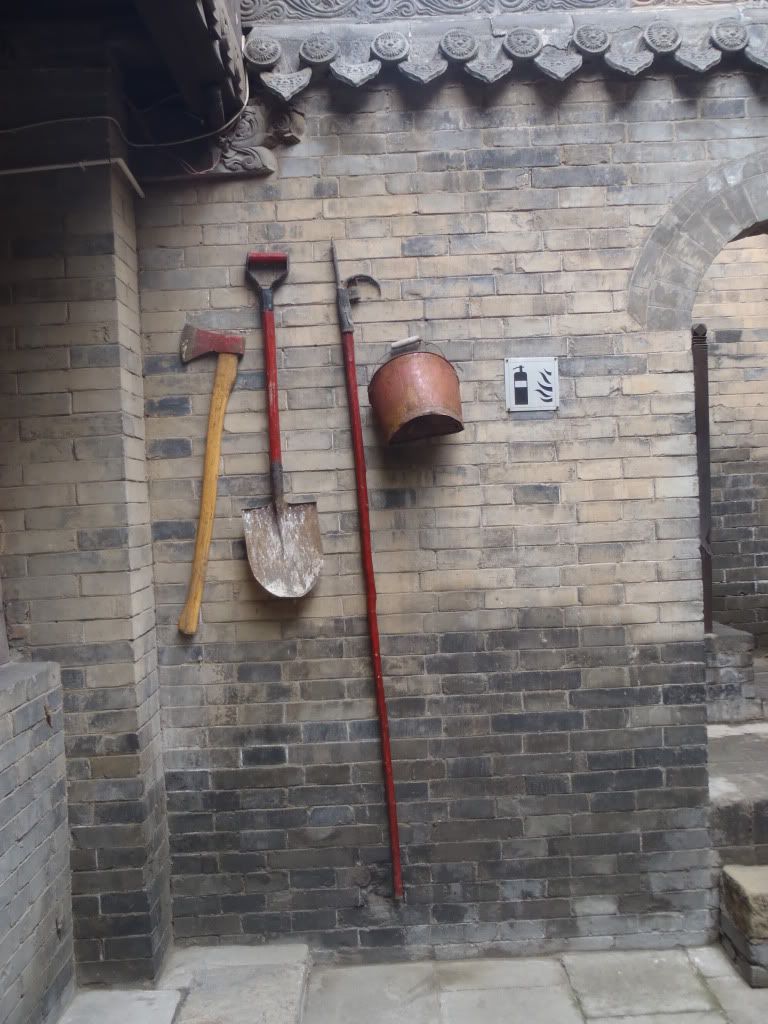
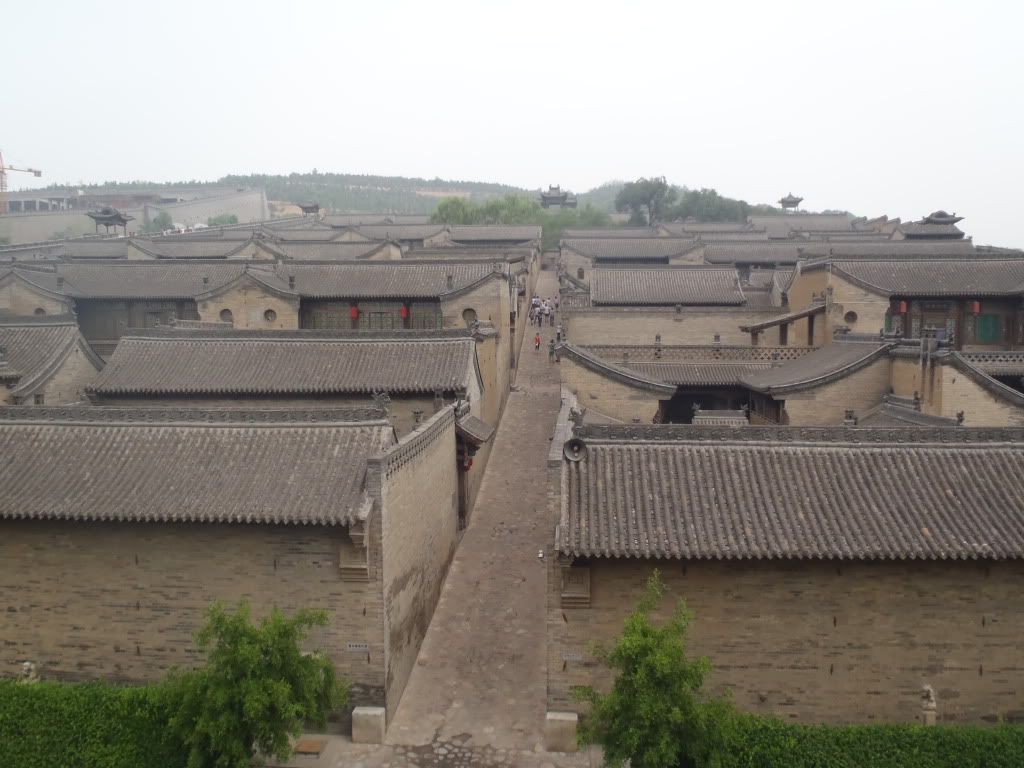
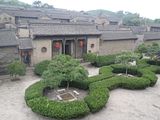
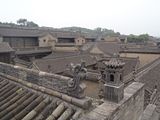
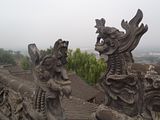
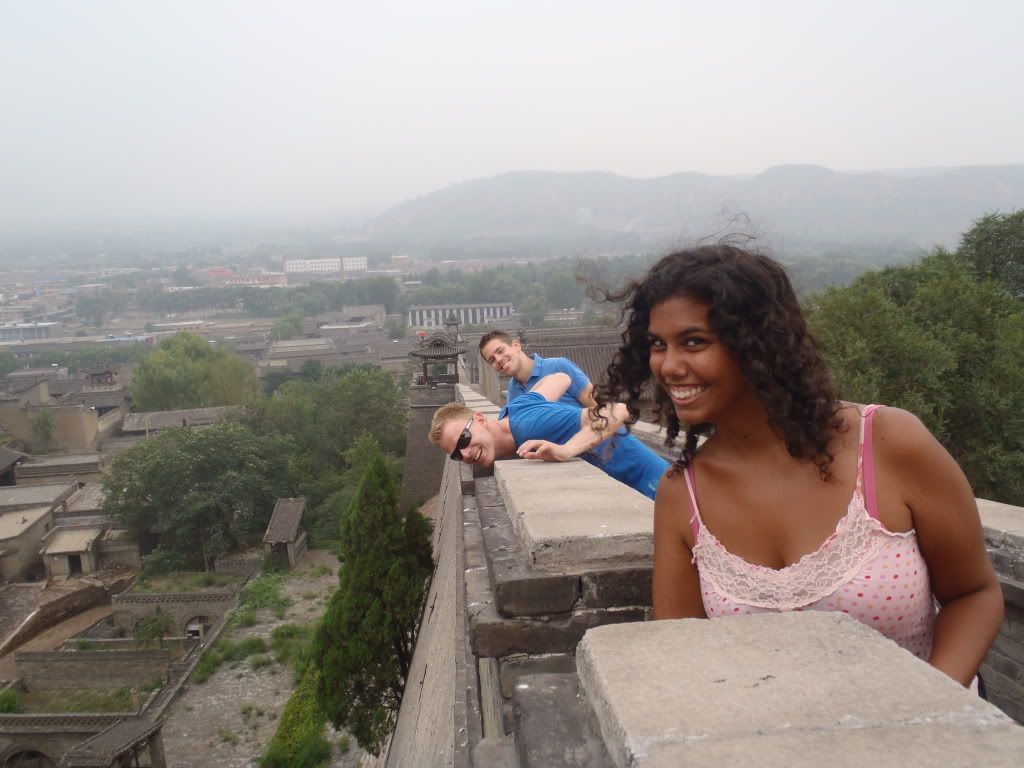
We jumped out of the car and met our temporary English guide (who couldn’t speak English too well) who led us around for a few minutes until the actual English-speaking guide rushed over to meet up with us. We were first led to a cooking area where someone supposedly saw the image of two dragons and thus the place was considered sacred from then on… however after a few times of pointing them out to us we still didn’t see any dragons so our guide took us to a nearby temple area instead. Here she showed us one of the few surviving Buddhist statues from a cave that was saved from destruction during the Cultural Revolution. This held a bit more interest for us! At this point our ‘real’ English guide joined us and he brought us into a room filled with posters of various constellations. He explained that the layout of the Underground Castle was built (its trees, buildings, other various objects and their positions relative to one another) according to star signs.
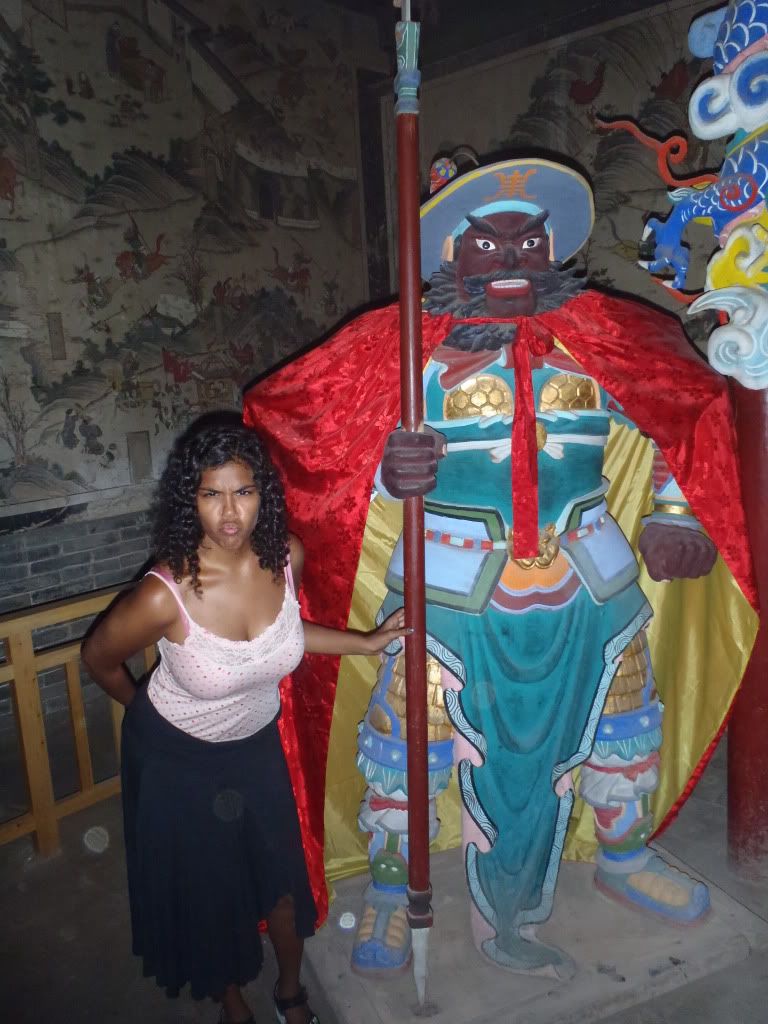
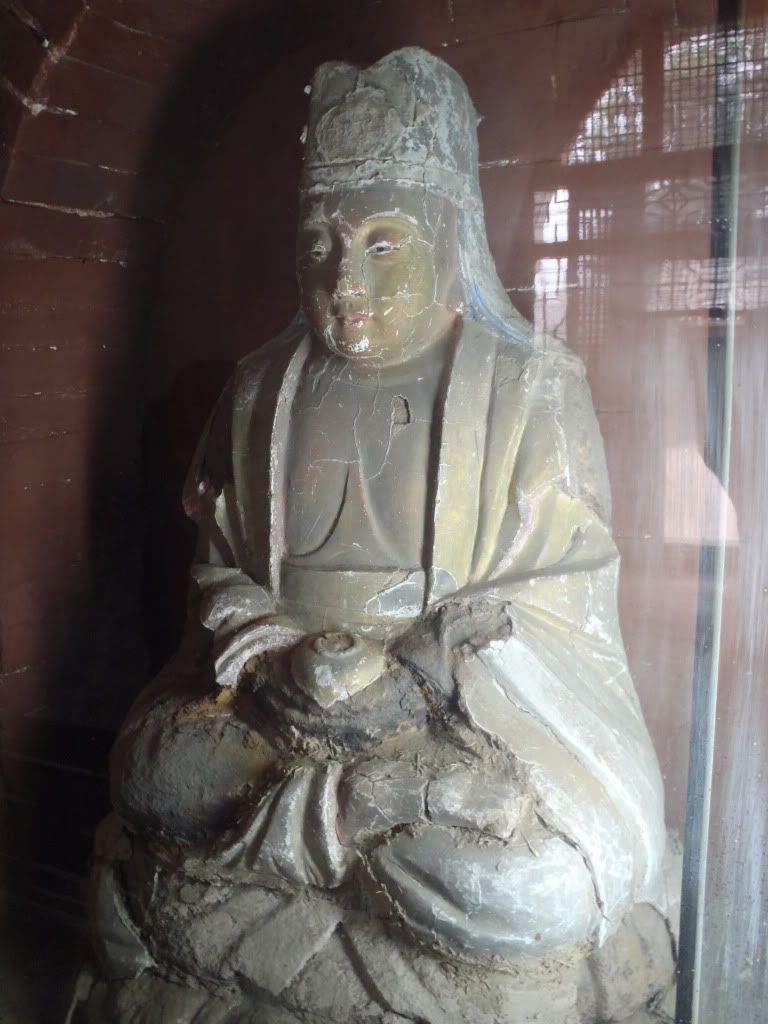
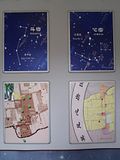
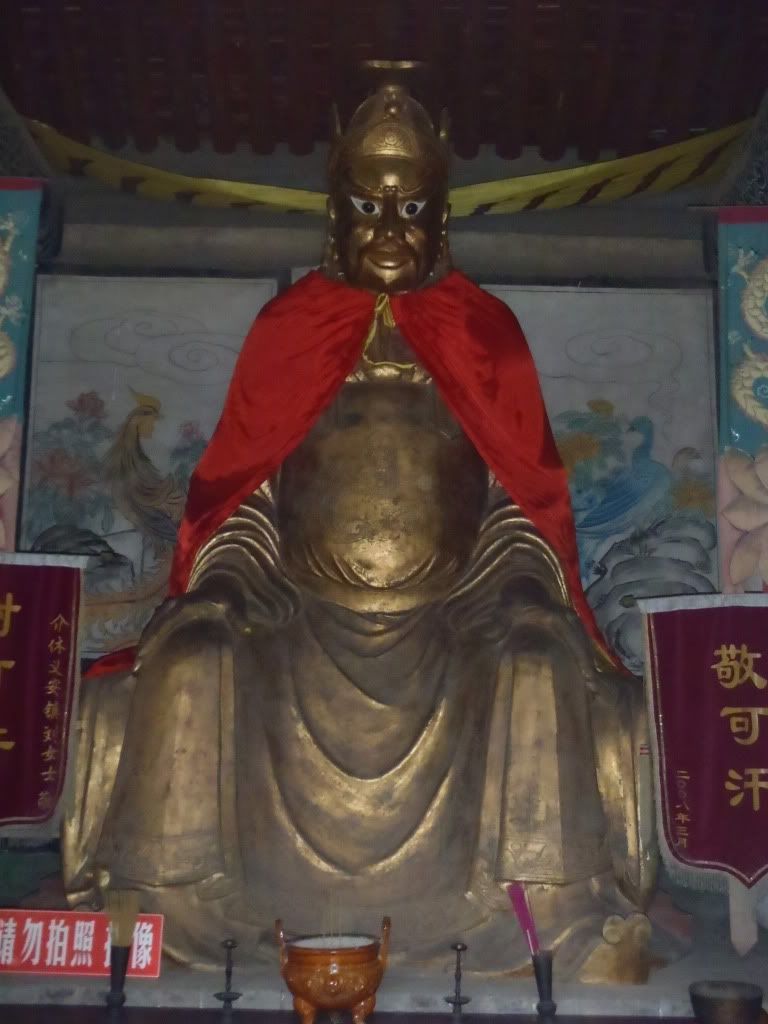
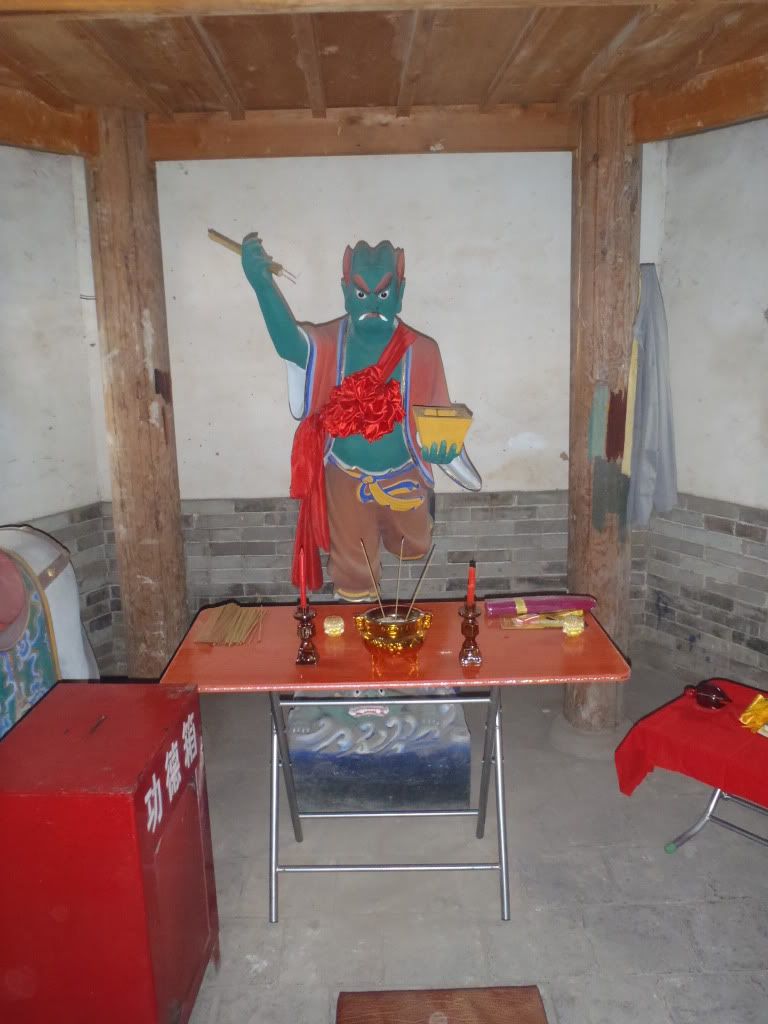
Next we ventured into Kehan Temple which didn’t hold much interest; except it was here our guide told us where the former secret entrance to the Underground Castle was. There was nothing left to see, just some built over stones. The coolest was yet to come though! Finally we were brought to a map of the underground tunnels we were about to enter and looked through it, noticing all the entrances. Later in our tour our guide would tell us that it is rumored the underground tunnels were created by a general who was trying to escape the wrath of the Emperor after it was made known that the general wanted, well, the Emperor’s own power.
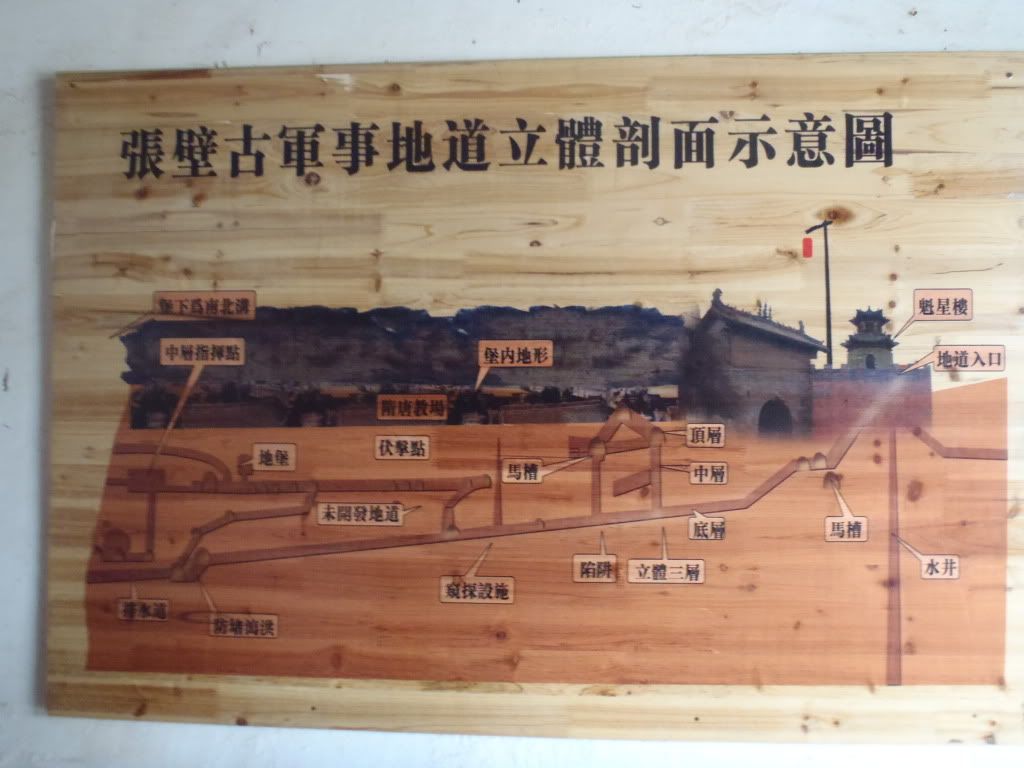
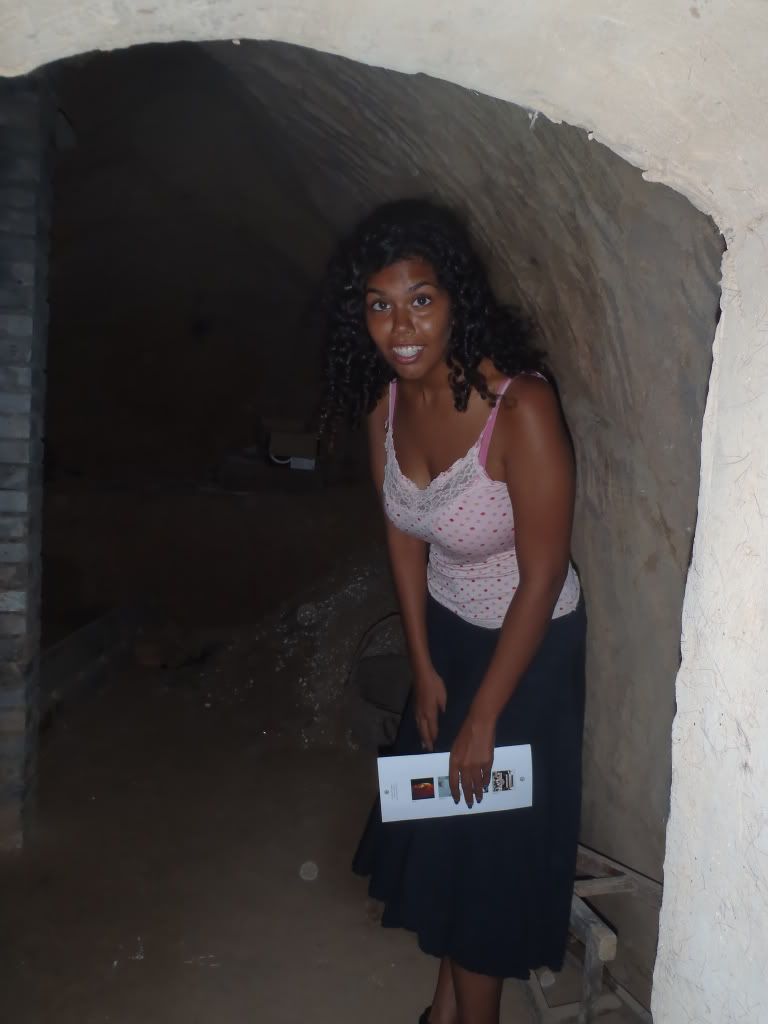
There were 3 main levels of the tunnels, reaching all the way down to a depth of 20 meters. The walls were originally constructed only of packed and ‘scratched’ mud, (done with crude tools) but in order to secure the tunnels for visitors they have reinforced various areas with bricks as well. As we walked through them and explored, our guide pointed out to us little holes where the people using bamboo poles could call to each other from one level to another. There was also a skylight where people living in the tunnel could check the outside weather without leaving their secure confine. We also saw cubbies where troops were stationed, storage rooms, the bedroom of the General, and a bunch of various man-made traps. An invader who made it into the tunnel wouldn’t be aware of the trap’s existence and would simply fall through the leaf-covered hole in the floor. They would then end up easily captured by guards in the tunnel.
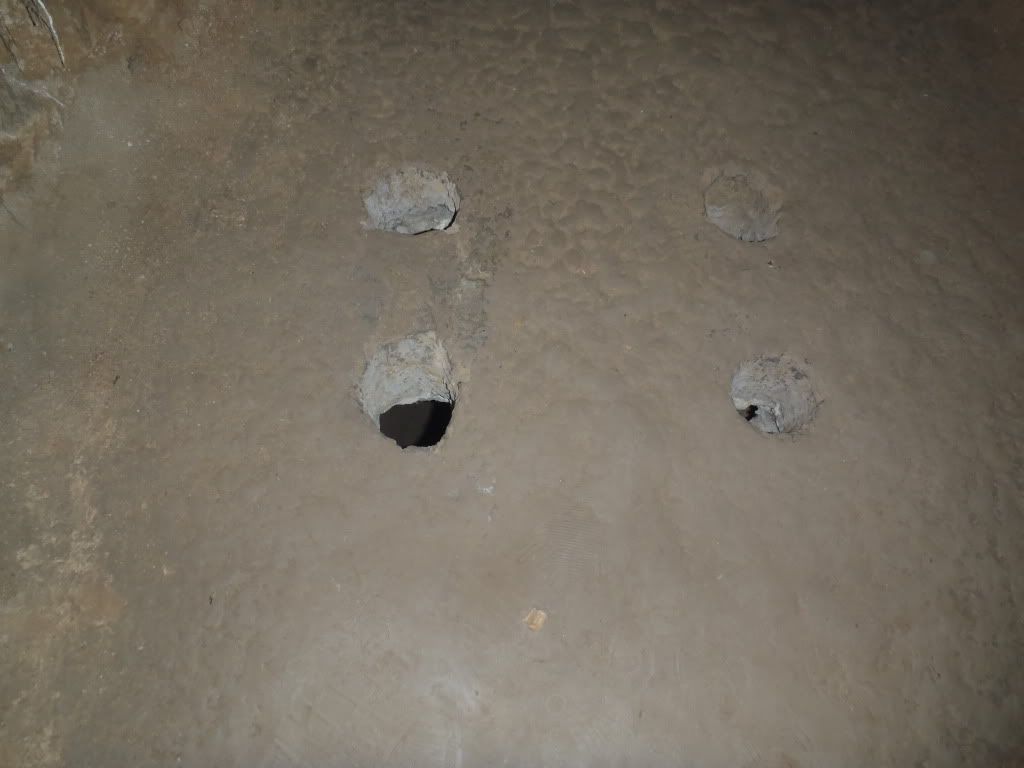
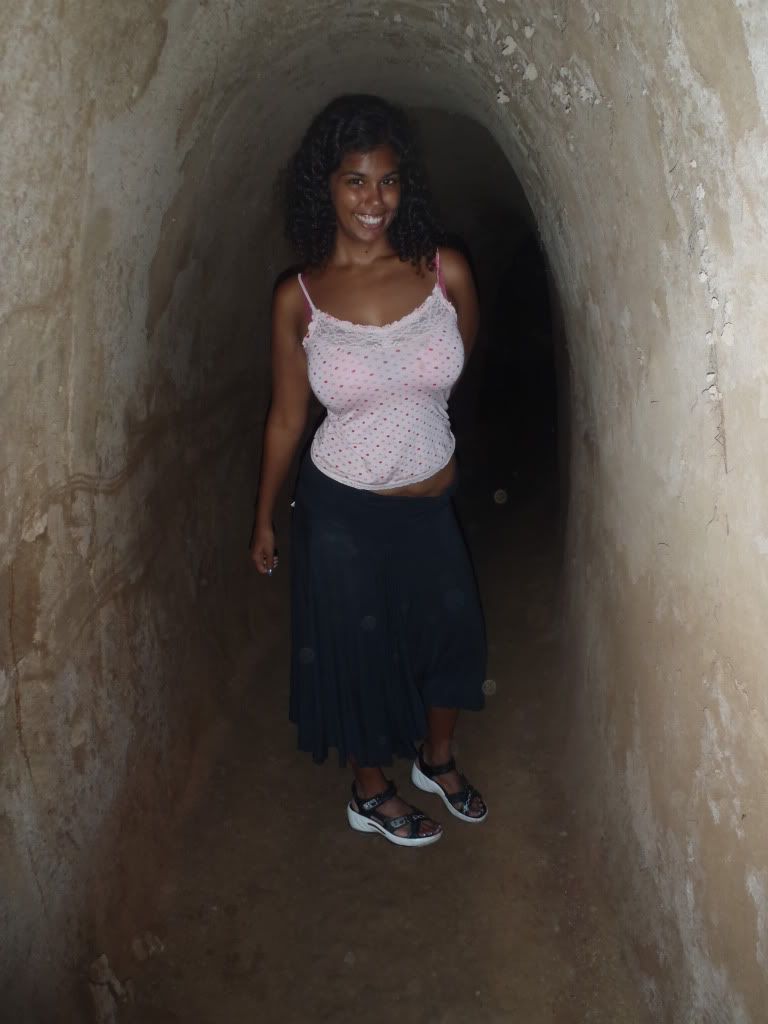
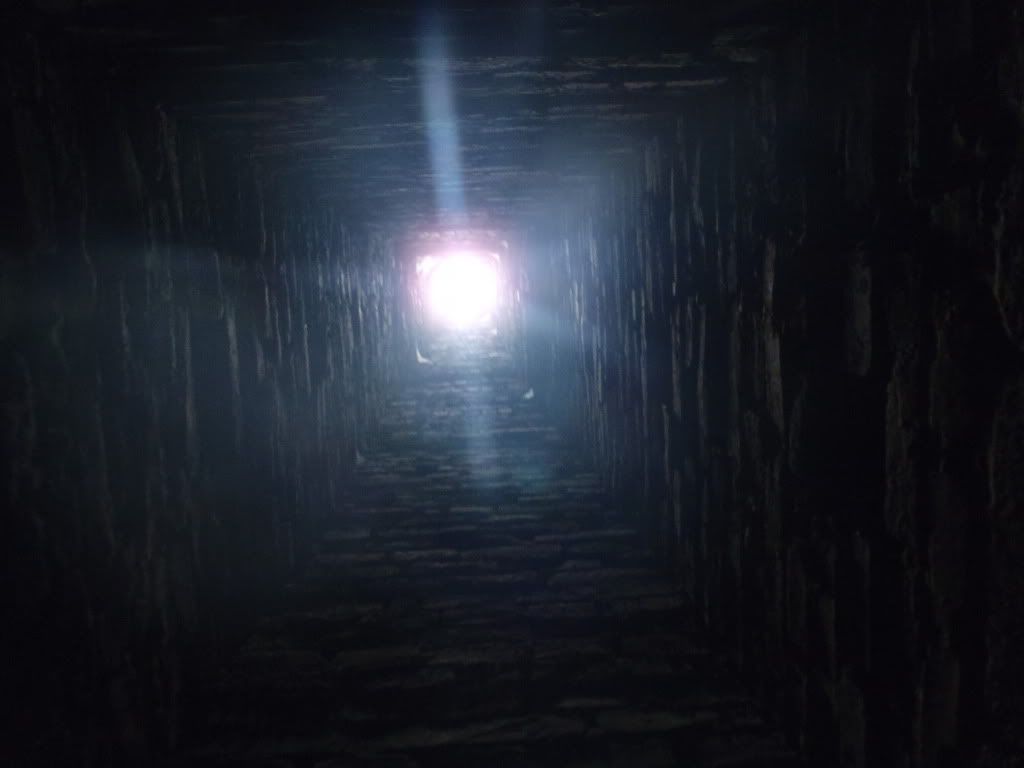
Many of the tunnel exits led to areas where animals would be kept for food and down to the river for easy access to water. The exit we left the tunnels from turned out to be in the floor of a simple, old house. One room, with just a kitchen and a large bed, this house was the ‘front’ for an entire underground network! And you could never tell from the outside, could you? Next our guide took us to see the two large (and now empty) pools in the complex that when filled would show that the whole area from above resembles a ‘ying-yang’ symbol. We then passed through another few temples including the Zhenwu Temple and the Empty King’s Temple. Towards the exit our guide pointed out a large outdoor area in between two big gates. He explained to me that if an intruder would make it through the first gate it would actually be a good thing, because the gate would be sealed behind him. They wouldn’t be able to get through the second gate, so they would be trapped like a rat in a giant cage! The guards could then easily shoot at them or capture them. Pretty clever!
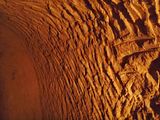
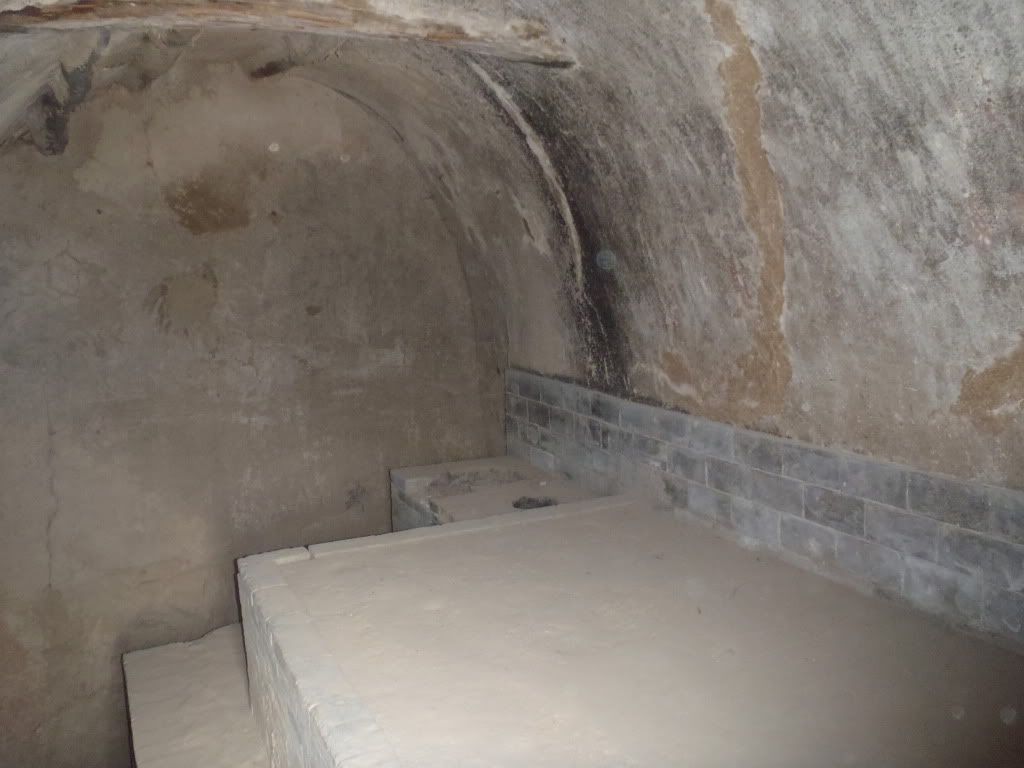
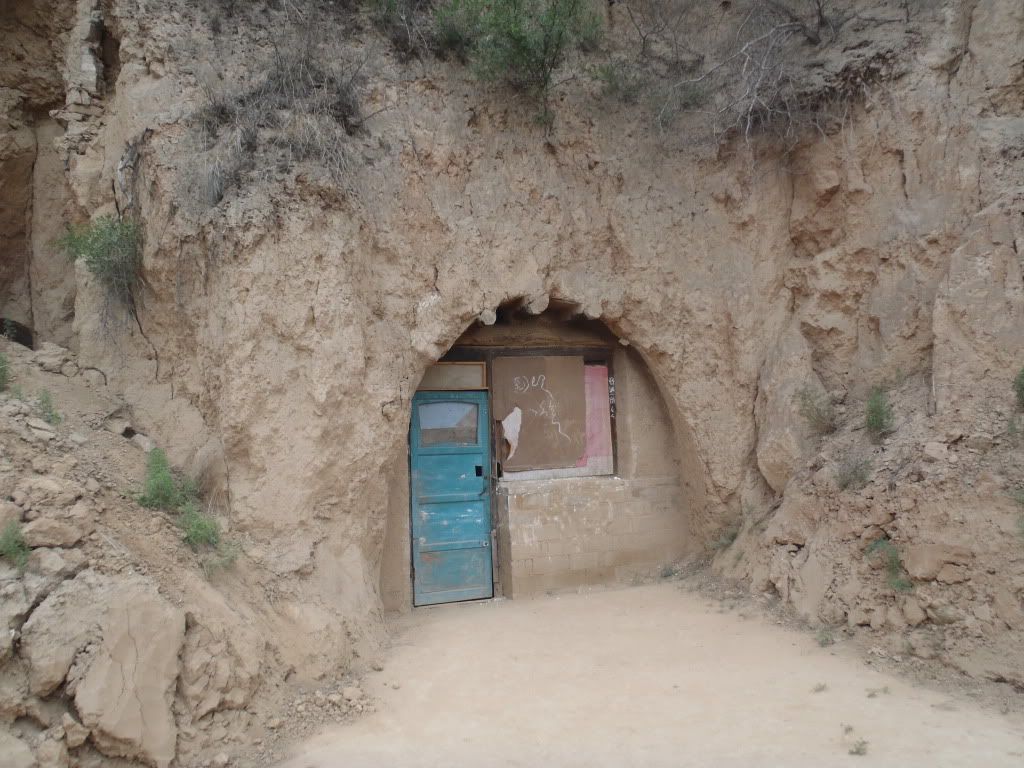
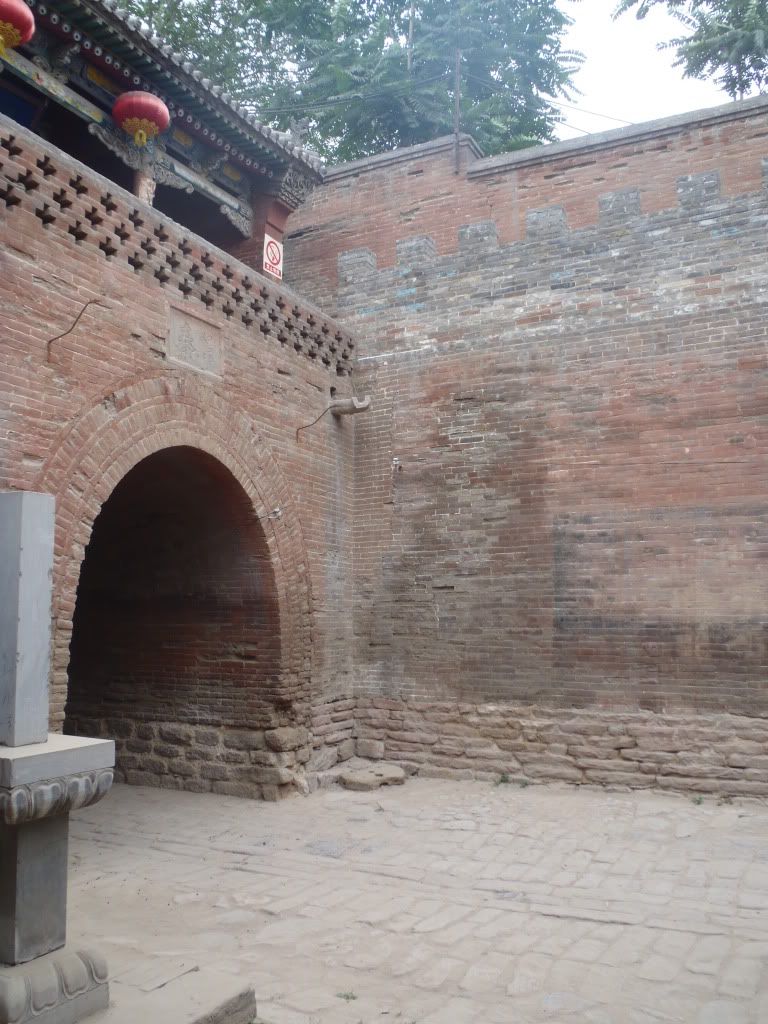
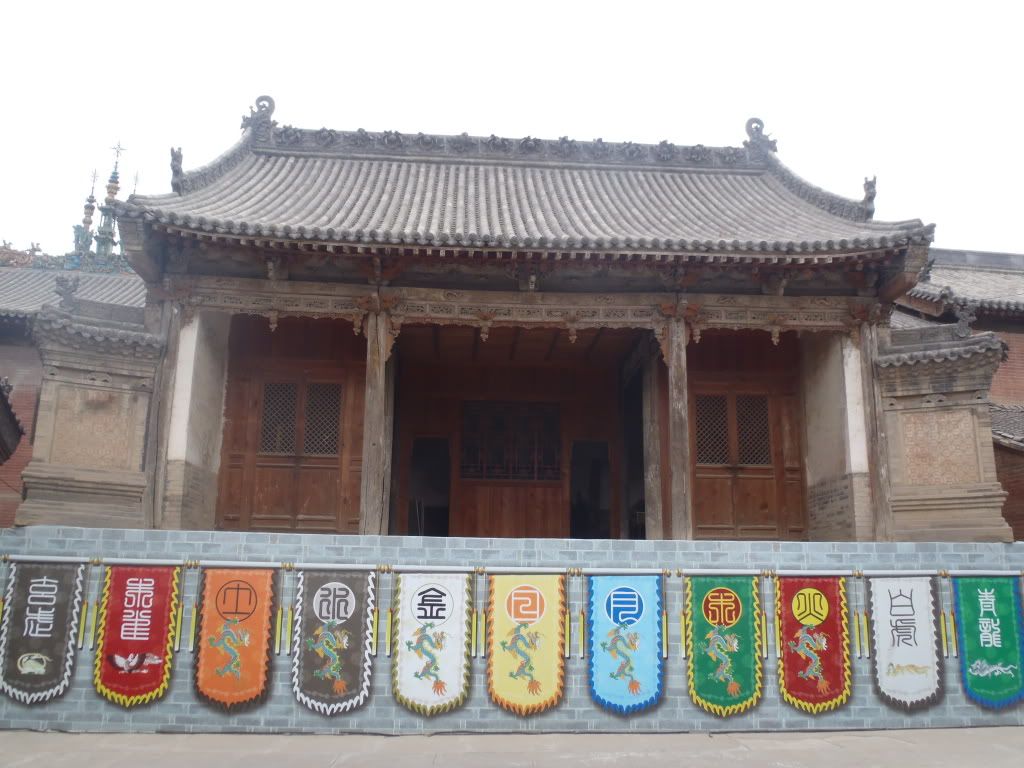

Once we finished our tour we drove back to Harmony and ordered some food for lunch. I wasn’t very impressed with the food Harmony produced (go to Sakura instead!) and Henk ended up getting me a sandwich to eat instead. By this time we had to get in our car (yet again!) to drive to Taiyuan. The Dutch guys were dropped off first to catch their bus, and we were then left at the airport for our flight. Sadly, Henk and I accidentally forgot my favorite hat (from the Philippines) in the car and we’d have to call later to see about getting it back. Perhaps someone could bring it to Xi'an for us! Because that’s where we were going…
Francesca


A bit about the city of Pingyao from our friend Wiki: “Pingyao was a financial center of China. It is now renowned for its well-preserved ancient city wall, and is a UNESCO World Heritage Site… Pingyao still retains its city layout from the Ming and Qing dynasties, conforming to a typical bagua pattern. The city walls of Pingyao were constructed in the 3rd year of the Hongwu Emperor (1370). The walls have six barbican gates. The north and south sides have one gate each. The east and west sides have two gates each. This pattern is similar to that of a turtle (the head, tail, and four legs), earning Pingyao the moniker "Turtle City." More than 300 sites in or near the city have ancient ruins. [The] preserved Ming- and Qing-style residences number close to 4,000. The streets and storefronts still largely retain their historical appearance.”


There was even a moat just outside the city walls! We walked through the active main street of the city which was littered with stores and snack-vendors and entrances to old courtyards where the residences had largely been turned into hotel rooms for tourists, (but locals did still live there as well!) then explored the numerous gates around the walls, all extremely well preserved/restored. We even walked around outside the city walls for a bit to see a more modern Pingyao… which wasn’t that interesting so we quickly went back inside the enclosed city! It was close to dinnertime now and we had received a recommendation for some great pizza from the Dutch guys – go to Sakura they said. We did and discovered from the restaurant’s front menu page that they were apparently also located in Chiang Mai, Thailand and Vang Vieng, Laos! Perhaps we ate there before and had no idea! Henk and I shared some average macaroni and cheese and some delicious Hawaiian pizza before returning to our hotel for rest.














Early the next morning we headed to the lobby of Harmony Guesthouse to order some take-away sandwiches for the long road trip we had ahead of us. It was extremely hot out already, so we knew we’d be in for a rough ride. Thank God the majority of the time we’d be in the A/C comfort of the car! The drive to Lijiashan was decently scenic but over 3 hours. We passed the time by discussing with Roy and Manuel where they have traveled in the world and their opinions on China. They even introduced us to a book that sounded really good – The Wild Geese – about 3 generations of Chinese women trying to survive in their respective societies. We started seeing signs that our destination was coming closer and after a bit of asking around, our driver managed to find it and navigate up a bunch of narrow, rough streets to pull into a little parking area.
The place looked completely deserted. The Lonely Planet had told us that this village constructed of cave-dwellings was an “absolute dream for travelers wanting to get firsthand experience of Shanxi’s cave houses” and that it “used to be home to more than 600 families… but today’s population numbers just over 40.” Well LP – that population must now be dwindling to nothing! We must have seen a total of 6-8 people while we were there at the most. Lijiashan is a (LP help taken here since there is hardly any information elsewhere) “remote 550-year-old village hugging a hillside set back from the Yellow River, [which] has hundreds of cave dwellings scaling nine stories.” Now once we walked up the dirt path and looked around, first of all we had a hard time figuring out exactly what we were looking for! We eventually realized that the “caves” LP describes aren’t actually caves, but rather homes built along/into the cliff on the mountainside. Looked cool in the pictures but the reality wasn’t nearly as special as they make it out to be. There were also supposed to be some hotels around but we saw no signs of life at all.


We did have the luck to meet one family (the only family we saw!) who still lived in their so-called ‘cave-dwelling’ house. They didn’t speak any English but were really friendly and hospitable and invited us inside to see their home. It didn’t look like it was a home built into a cave but it was very small and surprisingly cool inside compared to the horrible heat outside. They had one large bed in the corner of the room which was a traditional “bamboo mats” mattress and when I sat on it was just as rock-hard as I predicted it would be. We weren’t able to take any pictures of their place though, so you’ll have to settle for images of the even more deserted looking dusty courtyards, storage rooms, and small dwellings we found as we continued our walk around the town. Everything started to look the same pretty quickly despite us climbing up and down a bunch of different paths and exploring every different direction. The heat was absolutely killing us (I almost passed out and had to sit down, and everyone else was sweating with their eyes starting to glaze over!) so we gave up on finding more than we were seeing and headed back to the car.

















Our driver took us to the small village of Qikou which was right on the Yellow River. The LP tells us that it used to be a trading port – but the place looks long forgotten now. I also learned the following information from ChinaToday.com: “During the Kangxi and Qianlong reigns of the Qing Dynasty (1644-1911), Qikou was the commercial center and commodity transfer harbor, where dozens, sometimes hundreds of boats, berthed every day. Cereals, oils, salt, furs, medicines and many other products came to Qikou on water routes from northwest China, before being transported to other parts of the country by horse and camel.” It seems like the town fell apart after it became severely damaged during the Japanese occupation. Henk, Roy, Manuel, and I dragged ourselves out of the car and back into the heat with the promise of cold drinks and a seat in the shade. We tried to rest for a bit before we explored the area. While resting we observed the locals being fed their “pulled” noodle lunch by a chef who was pretty amusing to watch. However the extremely dirty location and products he was using (dark plumes of exhaust smoke were making their way out of passing trucks and giving all of the road-side food a good dusting) persuaded us not to try anything.

After a quick (and not too interesting) walk around the city trying to find the Black Dragon Temple (which we later realized our driver was planning on driving us to, but by that point we were too exhausted to go explore it) we piled back in the car and made clear to our driver that we wanted to return to Pingyao. A few hours later and we were back! The four of us decided to have dinner at Sakura again… BBQ chicken pizza, tuna salad, and fruit salad for Henk and I!

The next morning we met again in the Harmony Guesthouse lobby and headed back to the same car as yesterday (complete with the same Chinese driver as well!) for another journey outside of the city. This time we went to Wang’s Family Courtyard and the Zhangbi Old Castle. First, the Wang Family Courtyard. This complex was quite large – huge, in fact, compared to a lot of the other Chinese homes we had seen. We later watched the movie ‘Raise the Red Lantern’ which gave us a good idea how the different areas of the home were used. The ‘Master’ of the house would have multiple wives who would each have their own little house area – living, bedroom, etc. In this case the Master was of the family name ‘Wang’ which was also the shape (like the Chinese character ‘Wang’) that the complex was built in. This home was built during the Qing Dynasty and had more than 1000 various rooms covering more than 250,000 square meters! Insane! It looked like a really good place to play hide-and-seek, because not only was the complex gigantic but it all looked strikingly similar… both the hider and the seeker could get lost just trying to remember their way!


The four of us stumbled around the compound finding a nearly identical layout everywhere we went. The home was divided into both an east and a west section named Gaojiaya and Hongmenbao respectively. The first building group we came across was constructed in the 1700 and 1800’s by two 17th generation Wang brothers – Wang Rucong and Wang Rucheng. The area was just under 20,000 square meters and had well over 300 houses. There were rooms for servants, decorative parlors, and many, many bedrooms. Many of the buildings in the various courtyards were intricately carved and had many rooms to explore. There was even a school inside... the Guixin Academy of Classical Learning! However this got old pretty quickly since they all looked so similar! Couldn’t they have added a little color or differing décor to vary it up?


The next area of the complex titled the ‘Red Gate Castle’ was built a bit earlier than the former, solely in the 1700’s, and was much larger consisting of over 700 rooms. The style of these courtyards and buildings were much rougher and less sophisticated – more indicative of a Ming Dynasty style rather than Qing Dynasty. One of the more interesting areas was called the ‘Moral Character’ room which contained a large stone carving on the wall displaying “Four Comforts.” Towards the back of the complex was Wang’s Ancestor Hall which held the ‘Ancestor Worship’ room, a stage for performances, and various tower displays. After our final walk around Wang’s, the four of us returned to the car to be driven to the more exciting stop of the day: The Zhangbi Underground Castle!






We jumped out of the car and met our temporary English guide (who couldn’t speak English too well) who led us around for a few minutes until the actual English-speaking guide rushed over to meet up with us. We were first led to a cooking area where someone supposedly saw the image of two dragons and thus the place was considered sacred from then on… however after a few times of pointing them out to us we still didn’t see any dragons so our guide took us to a nearby temple area instead. Here she showed us one of the few surviving Buddhist statues from a cave that was saved from destruction during the Cultural Revolution. This held a bit more interest for us! At this point our ‘real’ English guide joined us and he brought us into a room filled with posters of various constellations. He explained that the layout of the Underground Castle was built (its trees, buildings, other various objects and their positions relative to one another) according to star signs.





Next we ventured into Kehan Temple which didn’t hold much interest; except it was here our guide told us where the former secret entrance to the Underground Castle was. There was nothing left to see, just some built over stones. The coolest was yet to come though! Finally we were brought to a map of the underground tunnels we were about to enter and looked through it, noticing all the entrances. Later in our tour our guide would tell us that it is rumored the underground tunnels were created by a general who was trying to escape the wrath of the Emperor after it was made known that the general wanted, well, the Emperor’s own power.


There were 3 main levels of the tunnels, reaching all the way down to a depth of 20 meters. The walls were originally constructed only of packed and ‘scratched’ mud, (done with crude tools) but in order to secure the tunnels for visitors they have reinforced various areas with bricks as well. As we walked through them and explored, our guide pointed out to us little holes where the people using bamboo poles could call to each other from one level to another. There was also a skylight where people living in the tunnel could check the outside weather without leaving their secure confine. We also saw cubbies where troops were stationed, storage rooms, the bedroom of the General, and a bunch of various man-made traps. An invader who made it into the tunnel wouldn’t be aware of the trap’s existence and would simply fall through the leaf-covered hole in the floor. They would then end up easily captured by guards in the tunnel.



Many of the tunnel exits led to areas where animals would be kept for food and down to the river for easy access to water. The exit we left the tunnels from turned out to be in the floor of a simple, old house. One room, with just a kitchen and a large bed, this house was the ‘front’ for an entire underground network! And you could never tell from the outside, could you? Next our guide took us to see the two large (and now empty) pools in the complex that when filled would show that the whole area from above resembles a ‘ying-yang’ symbol. We then passed through another few temples including the Zhenwu Temple and the Empty King’s Temple. Towards the exit our guide pointed out a large outdoor area in between two big gates. He explained to me that if an intruder would make it through the first gate it would actually be a good thing, because the gate would be sealed behind him. They wouldn’t be able to get through the second gate, so they would be trapped like a rat in a giant cage! The guards could then easily shoot at them or capture them. Pretty clever!






Once we finished our tour we drove back to Harmony and ordered some food for lunch. I wasn’t very impressed with the food Harmony produced (go to Sakura instead!) and Henk ended up getting me a sandwich to eat instead. By this time we had to get in our car (yet again!) to drive to Taiyuan. The Dutch guys were dropped off first to catch their bus, and we were then left at the airport for our flight. Sadly, Henk and I accidentally forgot my favorite hat (from the Philippines) in the car and we’d have to call later to see about getting it back. Perhaps someone could bring it to Xi'an for us! Because that’s where we were going…
Francesca

3 Comments:
Was Henk supposed to help you remember your "favorite hat from the Phillipines"?
Poor thing. So sorry and sad you lost your favorite hat from the Phillipines. Hopefully, it didn't ruin your entire trip visiting an ancient culture.
My Hubby and I were considering going on the same adventure as you and Henk. Are a long dress, pink blouse and open toed sandals with heels sufficient for backpacking and cave exploring? Are you and Henk still together?
Post a Comment
<< Home